GoPro Hero4 Silver Hero4 Black In-Depth Review
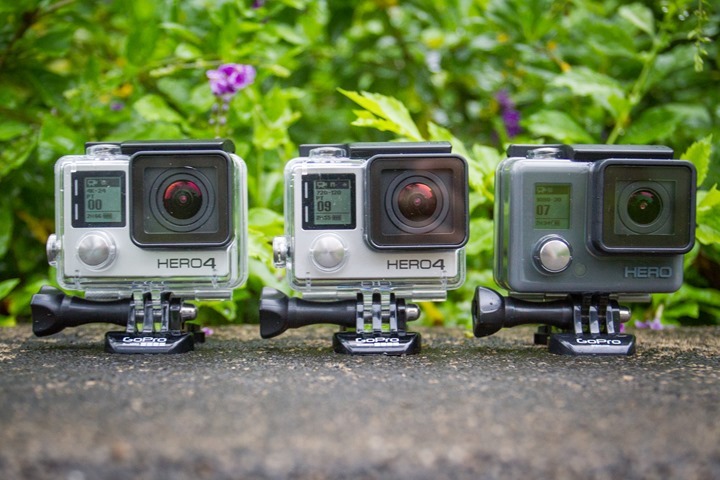
(Note: Review updated March 10th, 2015, inclusive of most recent firmware updates)
Early last month GoPro completed their annual October ritual of releasing a suite of new units. Like past years, GoPro doesn’t tend to make massive upgrades in their units, but rather works to add incremental features and performance bumps.
The thing is: These incremental bumps serve to stay just ahead of most of the competitors out there. But with these incremental bumps also came a rather unusual bump in price at the top end, while inversely dropping the lower-end unit significantly in price.
The question is, did this strategy work this time, and are they competitive in the market? Over the last month I’ve beat the crap out of the cameras, which I bought myself, to find out. From testing out the different new high resolution and high speed video modes to understanding the impact on battery life, I dive into it all. Let’s get started!
Unboxing:
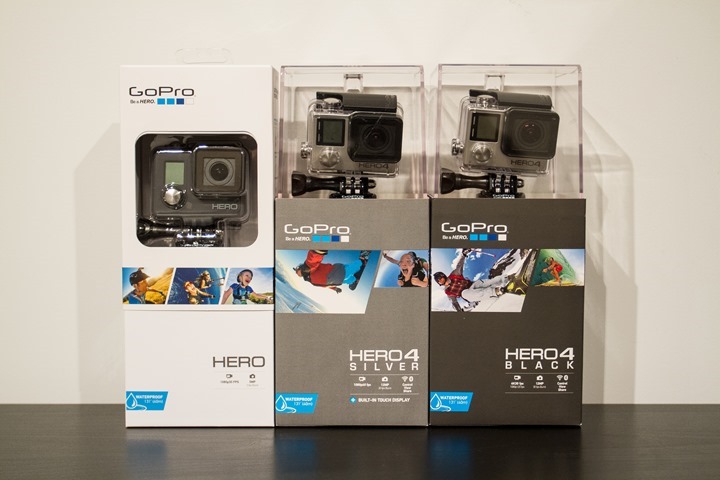
It’s somewhat rare that I group this many products into a single review. Sometimes I’ll do two minor variations of the same product in a single post, but I think this is the first threesome I’ve had around these parts. When it comes to the GoPro packaging though, all three units are pretty similar actually. They all include the following:
– The camera itself (duh) – The battery for the camera – A mini-USB cable – An underwater case rated to 40m/131ft – An alternate/secondary door for the case that allows for better audio – A small stack of GoPro stickers – A small quick-start guide and other paper junk – A flat adhesive mount – A curved adhesive mount – A loss prevention rubber stopper
In addition, the Hero4 Black and Silver also include a little adapter arm for the mounting system to change the direction a bit. Of course, because everyone wants to see exactly what comes in each package, I’ve included the unboxing for each of them below. I’ve abbreviated it a little bit though on the Silver/Base just to keep things non-redundant. Sound good? Let’s tear apart some boxes…
Unboxed – Black:
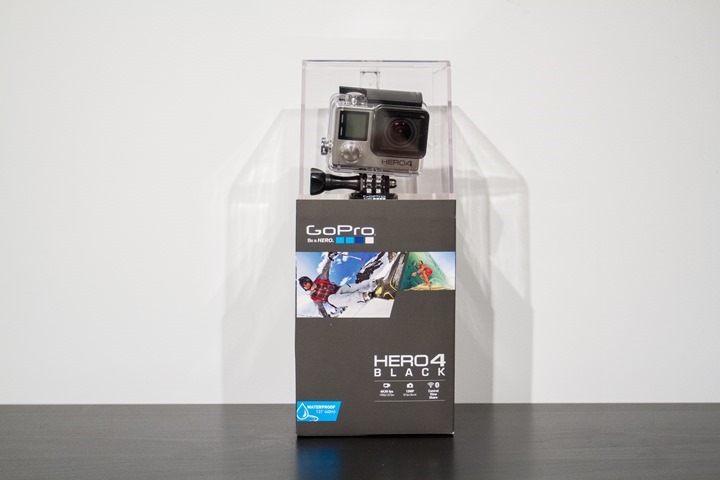
To begin you’ll find the boxes of the Black and Silver fairly similarly designed, with only the Base Hero slightly different with cheaper packaging materials to save weight and cost.
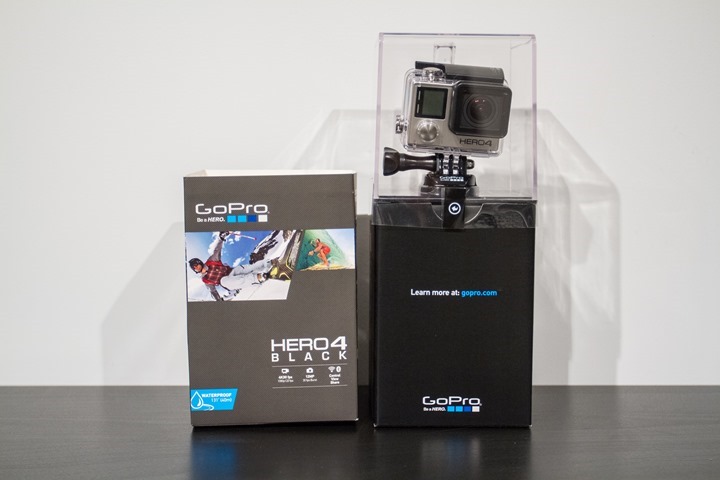
Here’s what you’ll get inside the Hero4 Black box. It’s all the items noted above, but one little piece that many people accidentally miss – which is the flat black baseplate that the Hero comes on. It can in effect act as a handy little tripod, yet many folks simply throw it away.
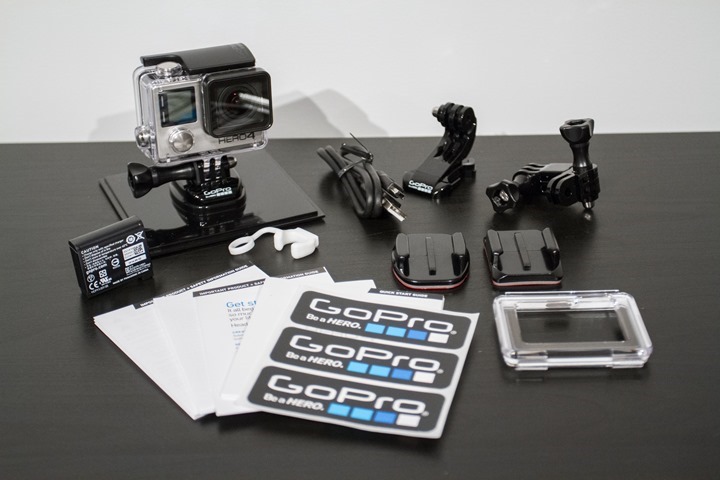
Looking at all the components individually, first we got the paper stuffs and GoPro stickers:
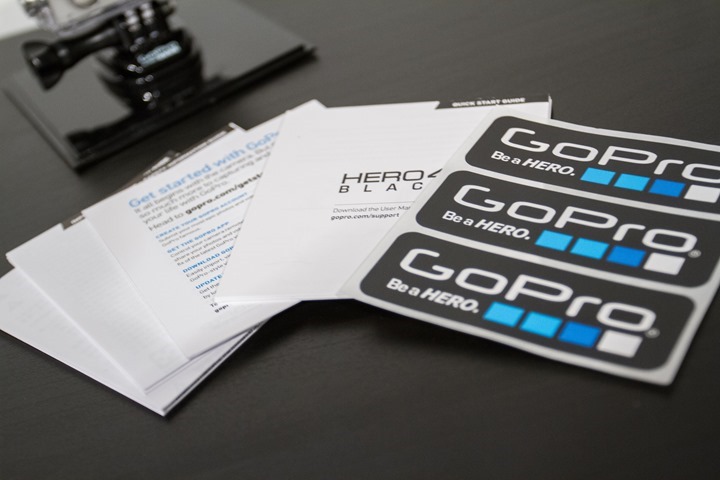
Next, the standard mini-USB plug that can be used to both charge the unit as well as download photos. Note that this USB cable (and your attached GoPro) can be plugged into any USB outlet on the planet.
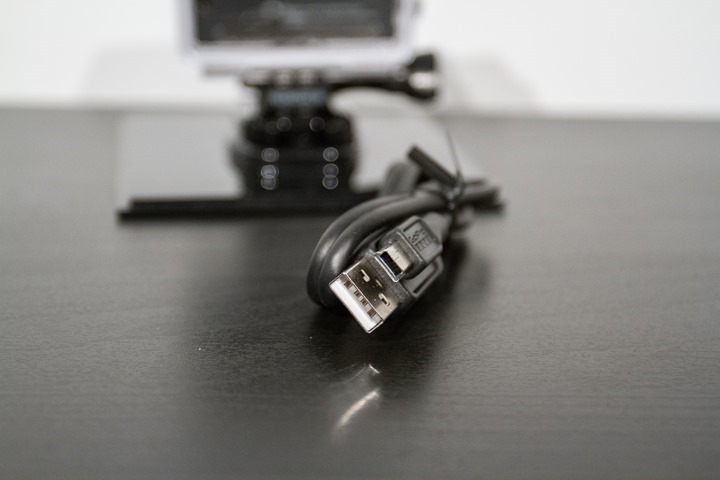
Then we have the new battery design of the Hero4 Black and Silver. It’s a bit thinner than the past batteries which were chunkier.
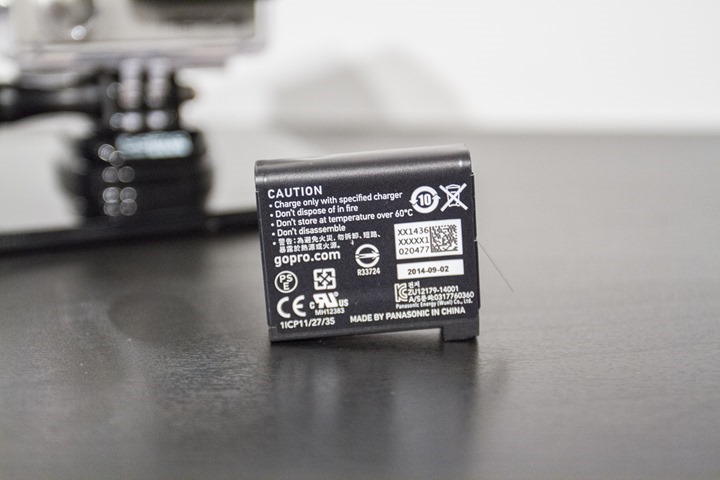
Both the Black and Silver come with the same set of mounts. You have two adhesive mounts, one being pancake flat, while the other is slightly curved (such as for a helmet). Behind it are two different mount pieces, one that holds the camera a little further back, while the other has less extension (it’s attached to the baseplate to begin). Meanwhile they also include a few extenders and direction changers seen to the right.
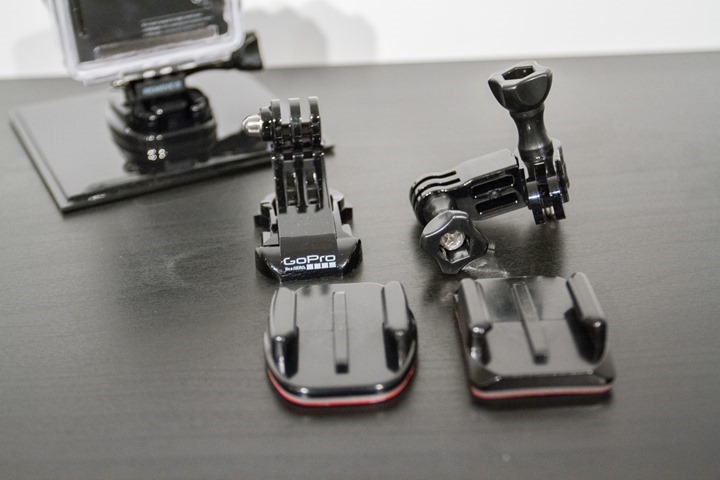
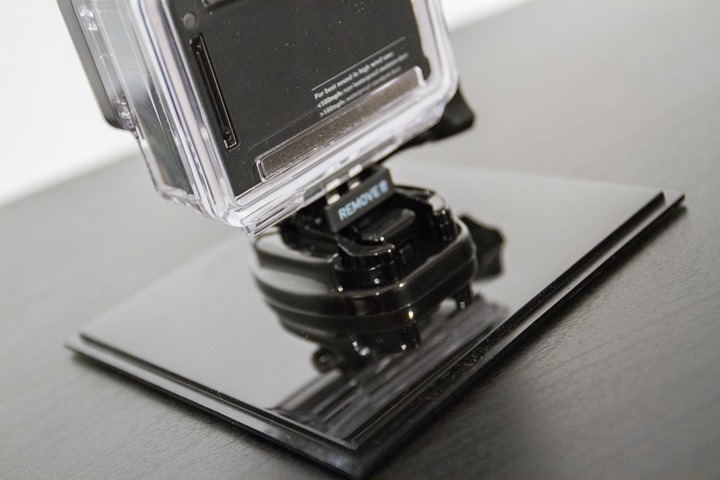
Finally, we get to the camera itself, which comes in the waterproof housing. There is a secondary door (seen up above), that allows sound to be heard relatively clearly versus the fully sealed waterproof housing where it’ll be rather muffled.
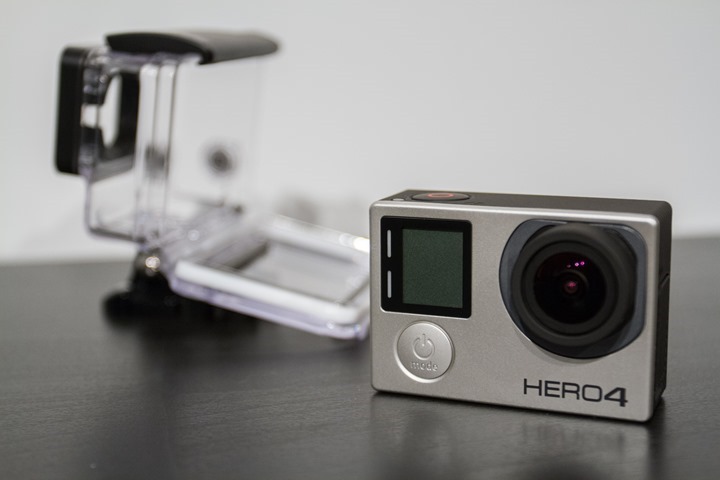
The bottom opens up identically on the Black and Silver, which is where you’ll place the battery. There’s a small little button you’ll press that’ll then pop open the door. It’s a much better design than the annoying battery cover found on previous GoPro units.
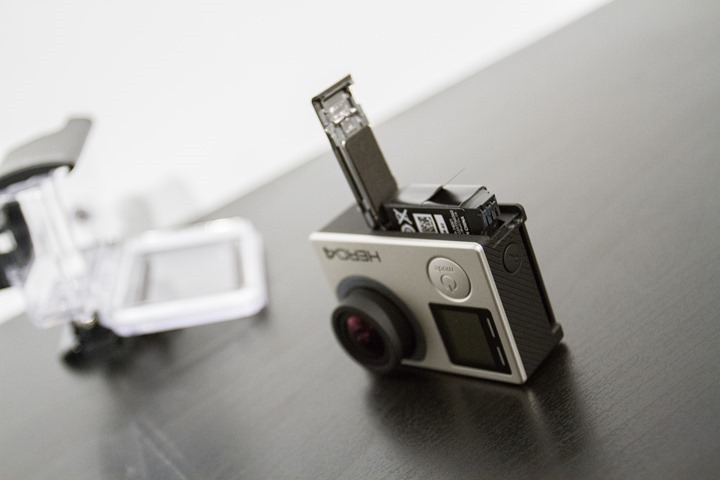
Finally, on the side you’ll have a small door you can pull off that includes the HDMI and mini-USB ports, as well as the MicroSD card slot.
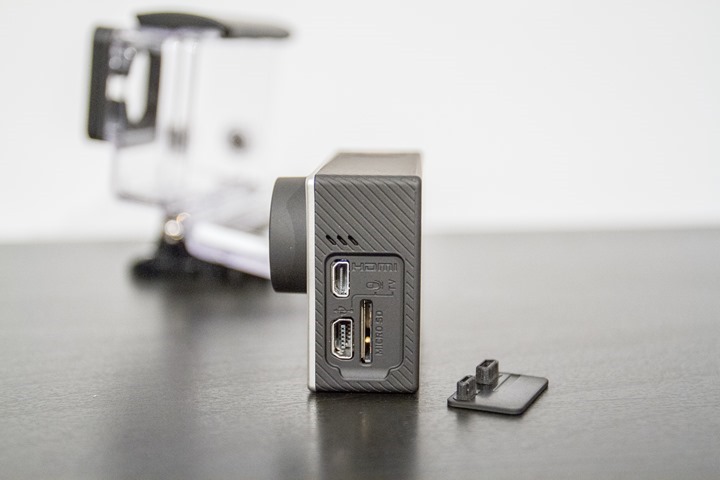
Let’s move onto the Silver edition now.
Unboxed – Silver:
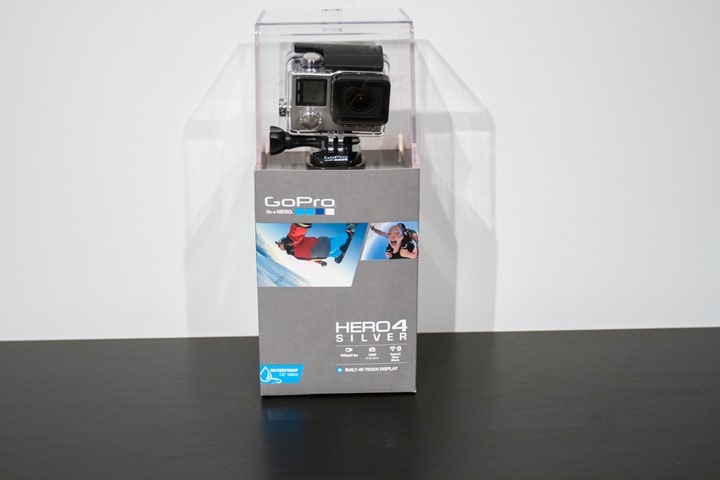
Next, the middle child of the group, the Silver. As you can see below, the parts are nearly identical to the Black in the earlier section.
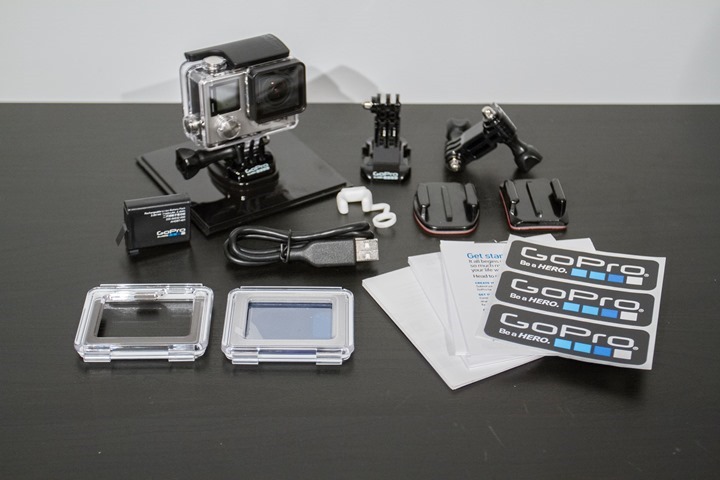
The only difference in the box is the case doors. The Silver edition includes three doors (instead of two), and two of these doors are designed to allow you to operate the touch screen. In the below photo, the two lower doors allow touch screen operation. The left one is completely open, while the right one has a thin flexible plastic.
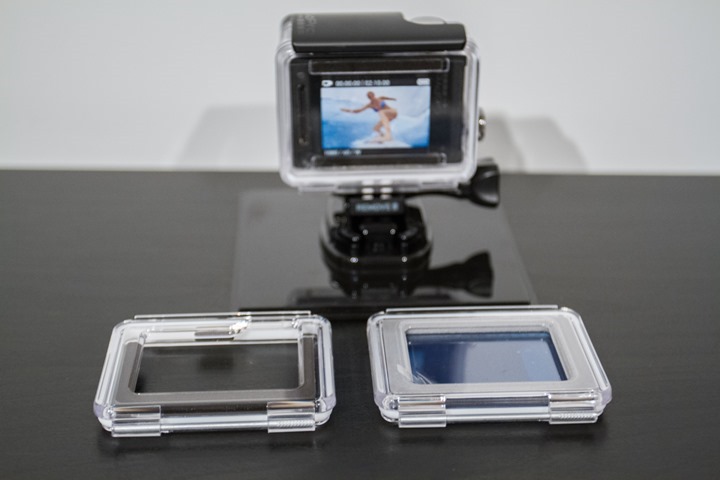
That thin flexible plastic actually is two pieces of plastic, one of which you’ll remove. The one to remove is the blue-tint one. If you somehow manage to remove the other one, you’ve totally hosed things up – since it’s molded into the case.
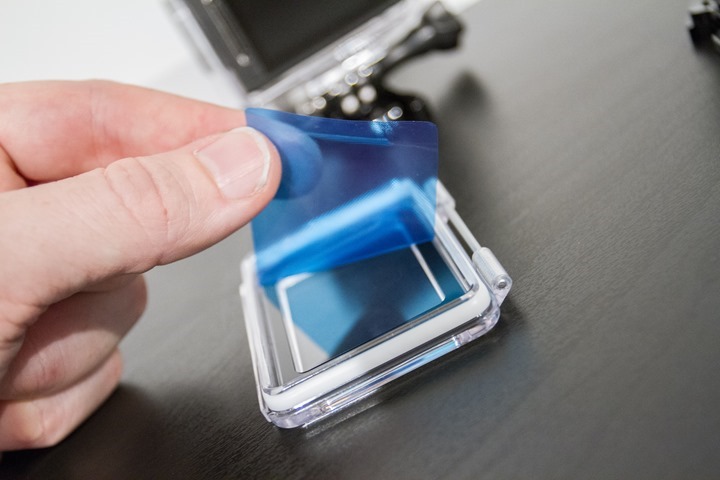
Here’s all three doors post-plastic removal:
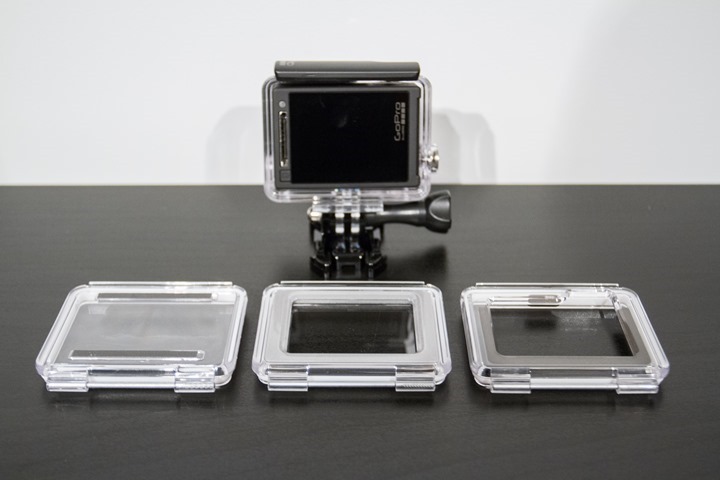
Here’s the front of the camera, as you can see, it’s virtually identical to the Hero4 Black. Though, strangely in my case it actually has a small manufacturing defect on the front of the LCD screen. It hasn’t bothered me though, and I’m too lazy to deal with returning it.
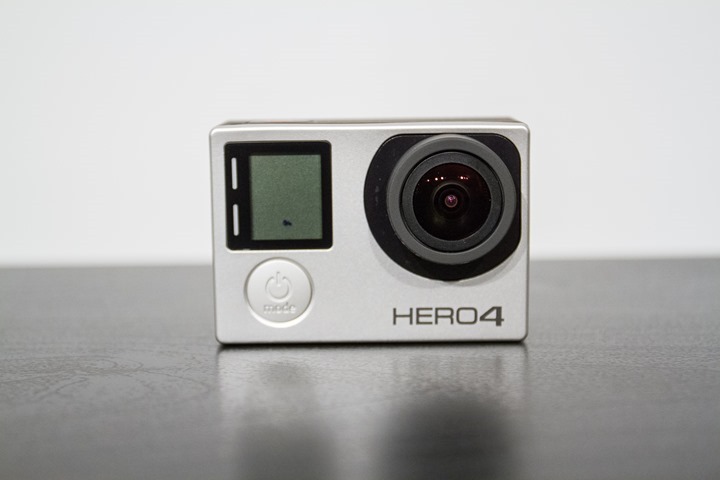
It’s the back of the unit though that is significantly different, being the touch screen:
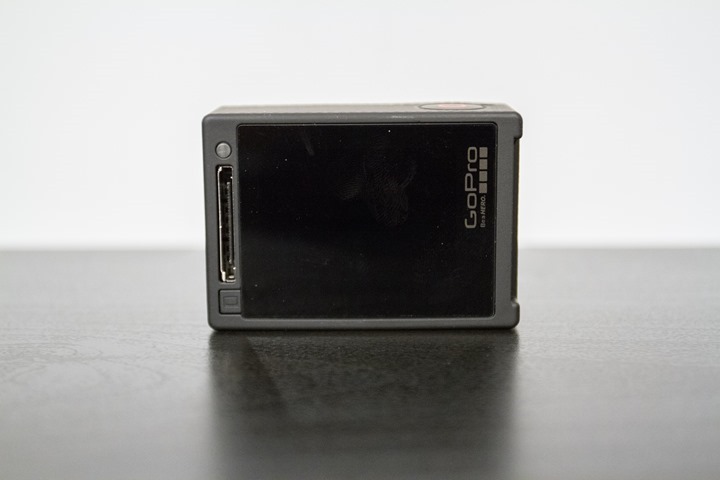
But don’t worry, I’ll dive into the touch screen in a moment – so hang tight there.
Unboxed – Hero (base):
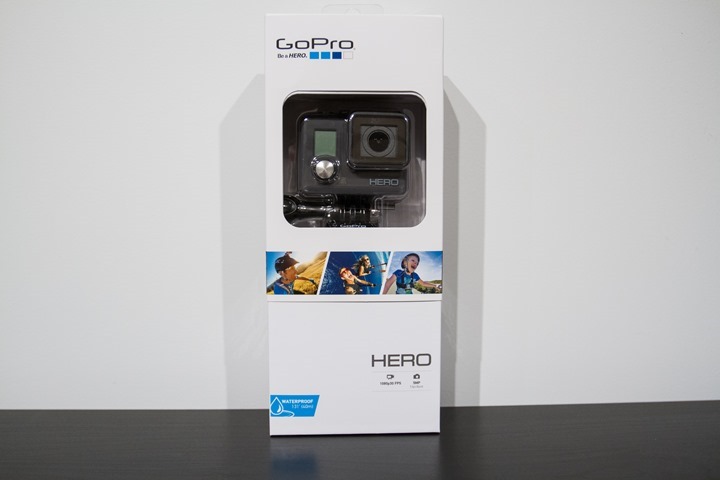
The 2014 GoPro Hero base unit is packaged slightly differently. For example it lacks the top plastic ‘dome’ found on the other/past units, as well as the plastic baseplate. Obviously at a fraction of the price they were looking to cut costs that were unnecessary, which, is completely reasonable.
Below are the components within the box. You’ll find the two adhesive mounts (flat/curved), but only one mounting attachment piece between the GoPro and the adhesive mounts. Don’t worry, you still get stickers.
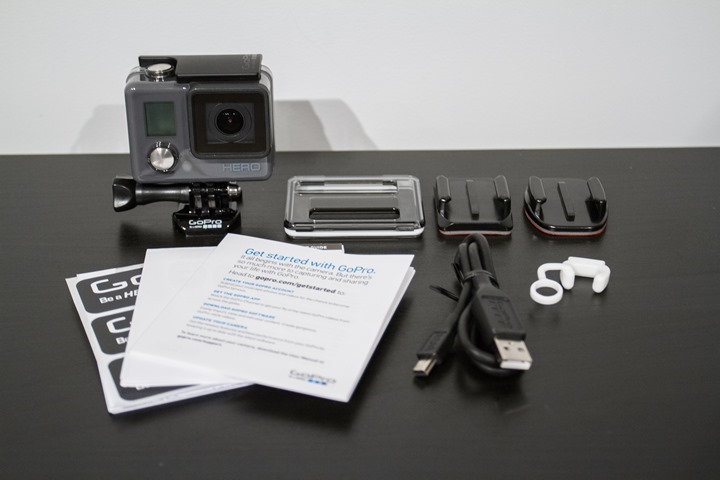
You also get the secondary door (with slots, for letting sound in).
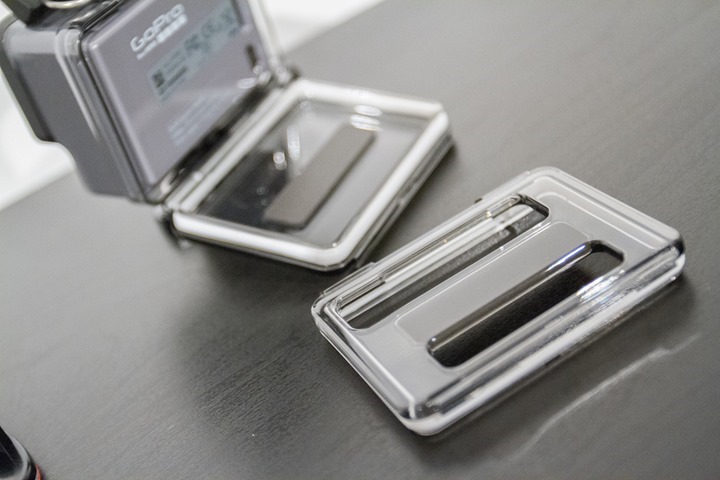
Meanwhile, here’s a close-up of the front of the unit:
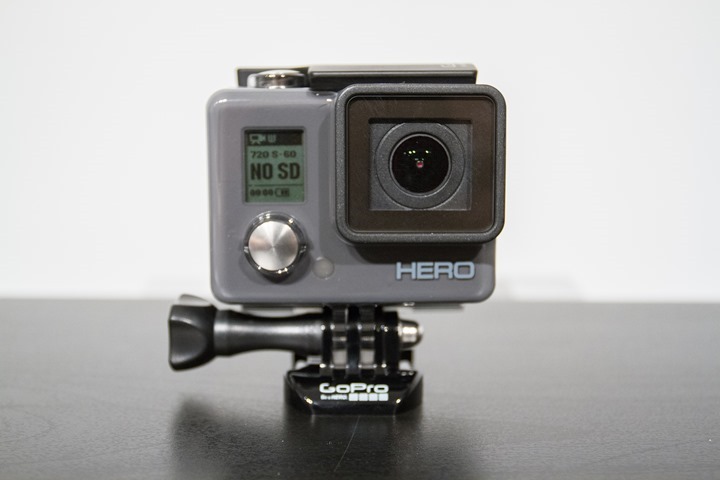
Now – and this next piece is really important to understand – the Hero base unit does NOT detach from the case. It’s molded into the outer plastic shell. Said a third way, you cannot remove the grey camera from the outer clear plastic case.

This is an obvious departure from the past. Though, in using it – there’s actually very little issue there in most situations for action cams. The main reason some people remove the camera from the case is to get it a bit smaller for various placement locations, or, to get rid of the glass off the front of the case (using the skeleton mount). But, for most people – heck, even kids – this makes it much harder to kill the camera.
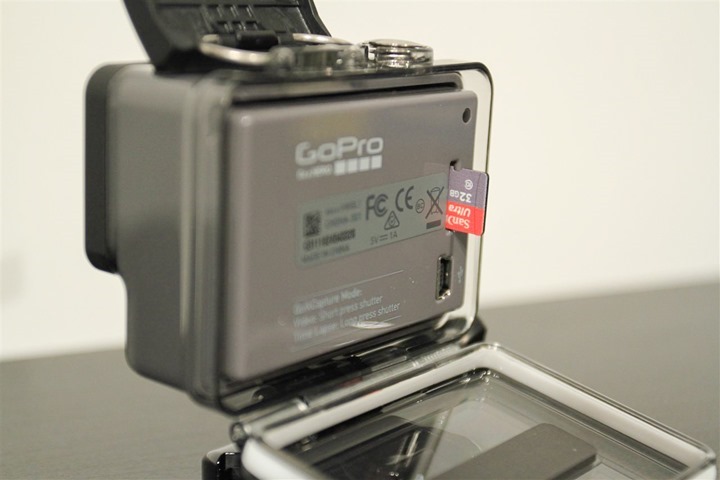
The only items exposed to you are the USB port and the micro-SD card slot. There is no HDMI connection available here, nor removable battery.
Size & Weight (Comparisons):
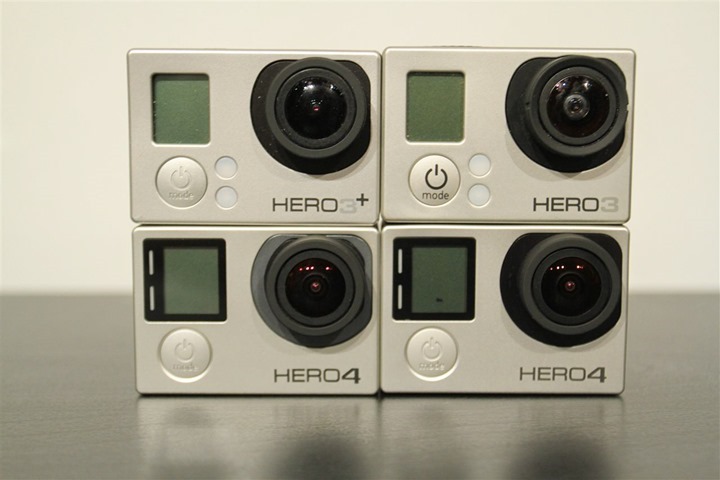
When it comes to size, the Hero4 is identical to that of the Hero3, so there’s no changes there. It’ll fit into all the same mounts, cases and locations that the Hero3 did. This is particularly interesting even in the case of the touch-screen display included on the Hero4 Silver. Of course, if you add a touch/display screen to the Hero4 Black then it’ll increase the size accordingly.
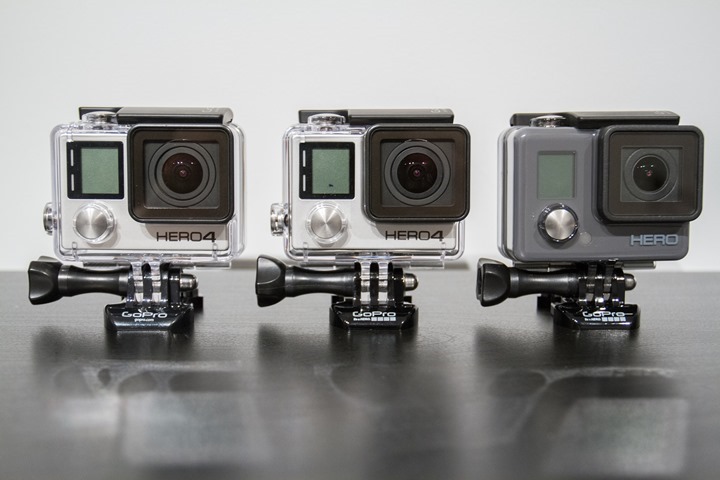
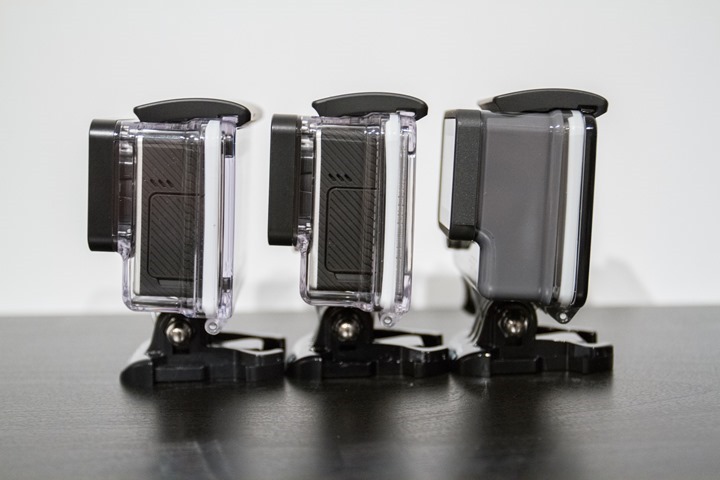
When it comes to weight, there are small differences between the Black/Silver units within the cases, as weighed by me:
Hero4 Black with Underwater Case: 150.6g
Hero4 Silver with Underwater Case: 142.1g
Hero Base (2014) with Underwater Case: 111.1g
Case included the solid-door backing, and the semi-flexible backing for the Silver case. It includes a single Micro-SD card, as well as the default battery. You can see that the Hero Base is actually a fair bit lighter, interestingly enough.
And outside the cases:
Hero4 Black:87.1g
Hero4 Silver: 82.0g
Hero Base (2014): N/A
Looking at other units on the market, the GoPro remains the smallest unit with the highest quality video. No doubt you can look at something smaller like the new Polaroid cube, but with that comes incredibly rough video (stabilization-wise). While the baseline Polaroid 1080p video isn’t horrible when just sitting still, it’s not at all awesome with any movement at all. And given the point of an action cam is…action, that’s sorta limiting:
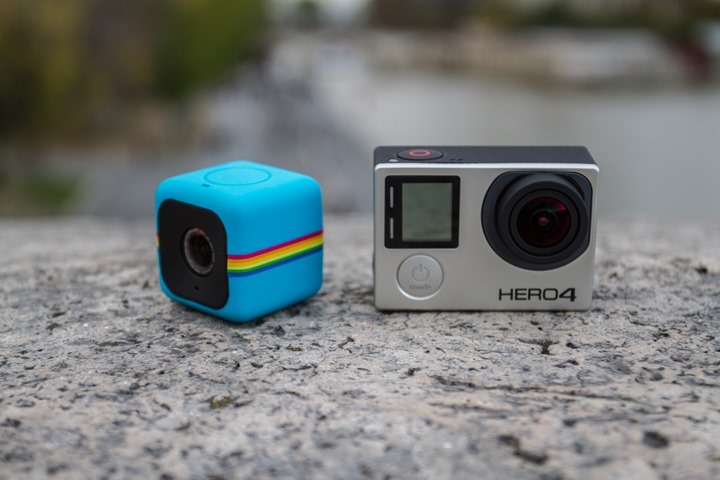
Meanwhile, if you compare it to something like the Sony series of action cams, it’s sorta a wash. The Sony cams are longer, but thinner. While the GoPro’s appear a bit chubbier. Both can go sans-case, though neither should be taken underwater without their respective cases.
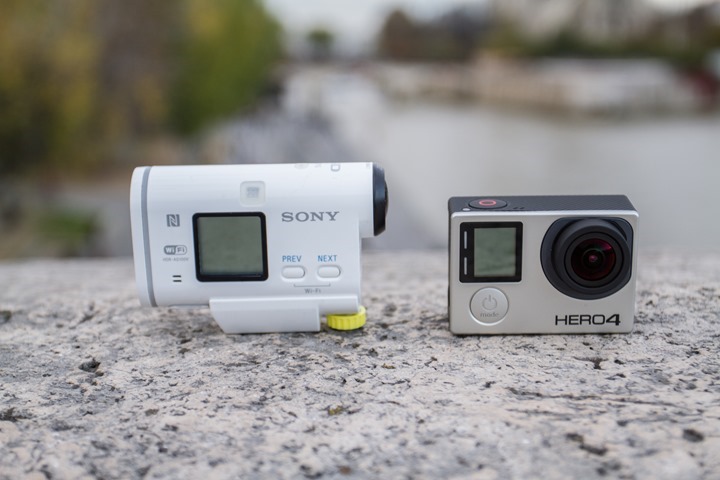
Turning to something like the VIRB series, the GoPro is much smaller without the case, though only somewhat smaller with the case. The VIRB doesn’t require a case unless going deeper underwater (splashing around in a pool is fine). But, the GoPro is also roughly the size of a Twinkie compared to that of a kiwi fruit (not the bird, nor the New Zealander’s) with the Garmin VIRB. Note that both the VIRB and VIRB Elite share the same outer shell.
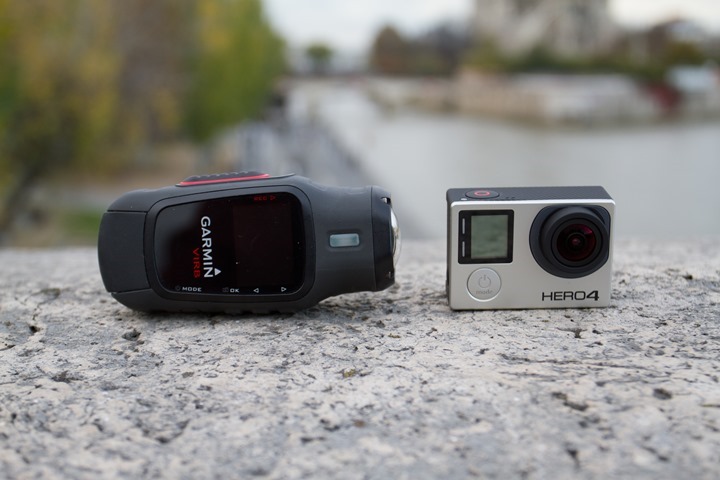
Things are a bit different with the case and a different perspective – such as the situation with the GoPro Hero base:
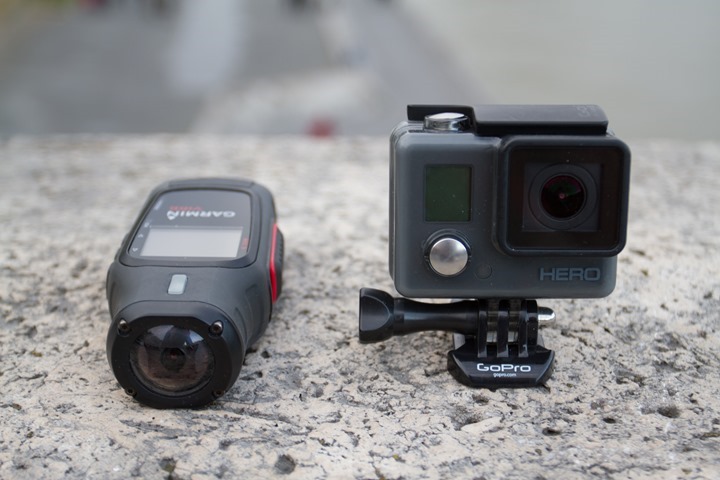
Of course, to some degree comparing sizes with the GoPro is somewhat academic. It’s well established as a completely acceptable sized unit within the marketplace – with the case. And without the case the options are pretty much unlimited.
The Basics:
Let’s start off with establishing some of the basics, things that are largely common to all units. To begin, you’ll turn on the unit by holding down the front-facing button (Mode). This will get the GoPro ready to record, but won’t start recording:
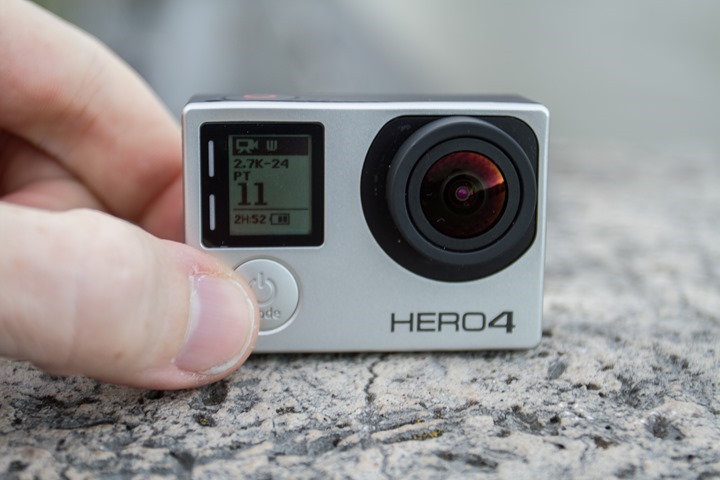
Alternatively, on all units you can enable a single button press mode (‘Quick Capture’) that will automatically turn on the camera in recording mode and start recording video as soon as it has started up.
Each of the units will require a MicroSD card to record to. These are super-cheap though and can be found starting at about $12 for quality 16GB ones. The Hero4 Black and Silver support card sizes up to 64GB, whereas the Hero base only supports 32GB. Note that when it comes to speed of cards, it’ll depend a little bit on how you plan to use the units. For generic 720p/1080p content in the 24-30FPS mode, it’s frankly not going to matter too much how fast of a card you have. But if you start recording 2.7K/4K footage at full frame rates you’re going to want fast cards to be able to keep up.
For those curious, in the Black/Silver I’ve been using the SanDisk U1 64GB Extreme Plus cards, without any recording issues. Again, for the Hero base, this would be beyond overkill (it couldn’t use it if it tried).
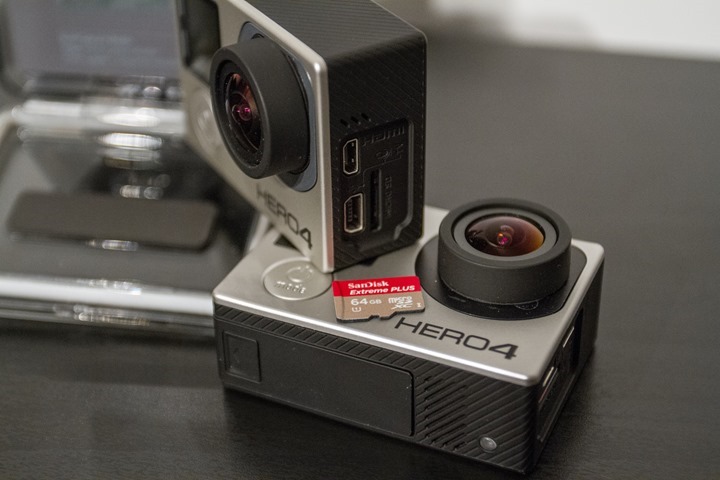
With the camera powered on, all units have a front-facing LCD screen. This screen will show you which mode you’re in, for example, video, photo, time lapse, etc… You can simply tap the front mode button to iterate to the next mode.
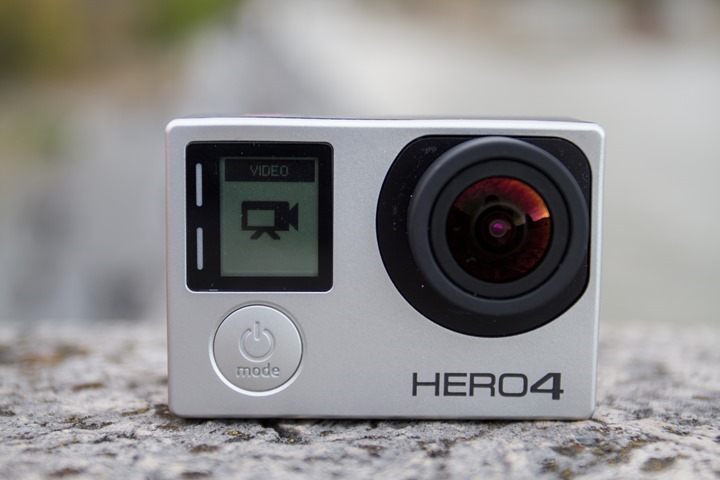
New to the Hero4 lineup though on the Black/Silver models is a direct settings button found on the side. While the button has always been there, it’s been for enabling WiFi. Now, it’ll do both. If you short-tap it, it’ll open up the settings menu for just that particular mode. If you long-hold it, it’ll enable/disable WiFi. It’s a beautifully elegant solution.
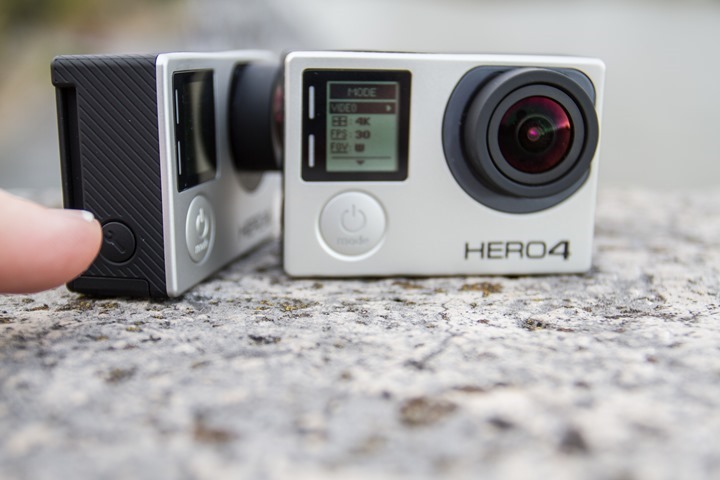
By short-tapping it you’ll get the video/photo resolution settings for just the mode you’re in. So if you’re in Video mode, it’ll show you the resolution settings which you can quickly change.
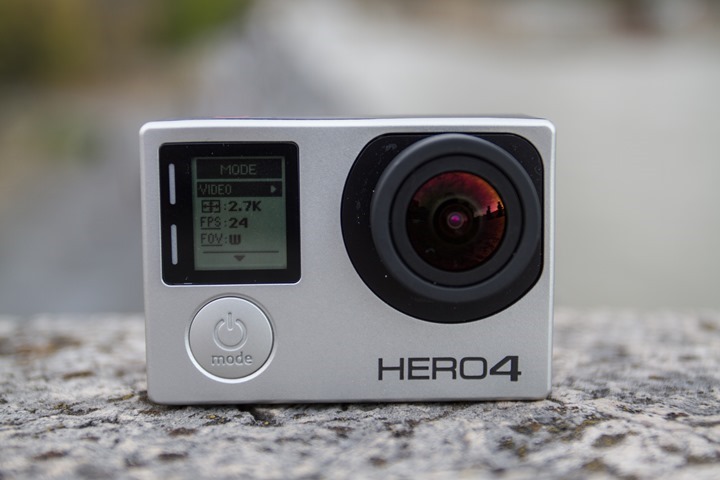
The same is true of photo modes, allowing you to then change how many shots it might take, and the resolutions of those. It’s without question one of my favorite features of the Hero4 lineup. Of course, you can still dive into the traditional settings menu using the mode button, but now those options on the Black/Silver pertain more to whole-camera options.
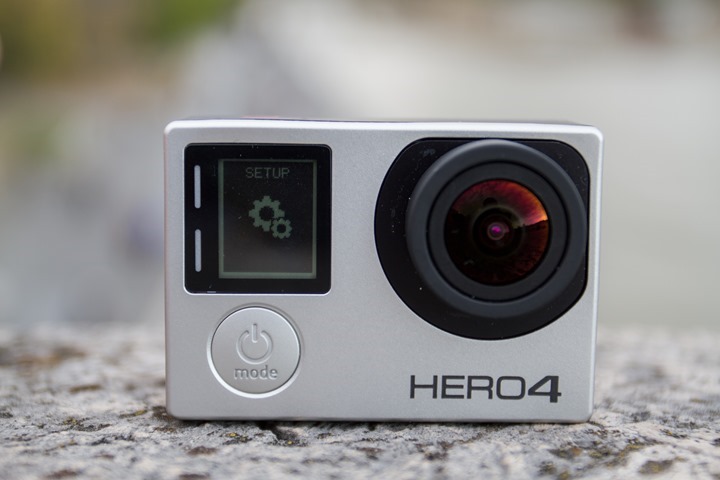
For example, this is where you would change the orientation of the camera (Black/Silver/Hero), as well as change which mode the camera starts off in, for example, photo instead of video (Black/Silver).
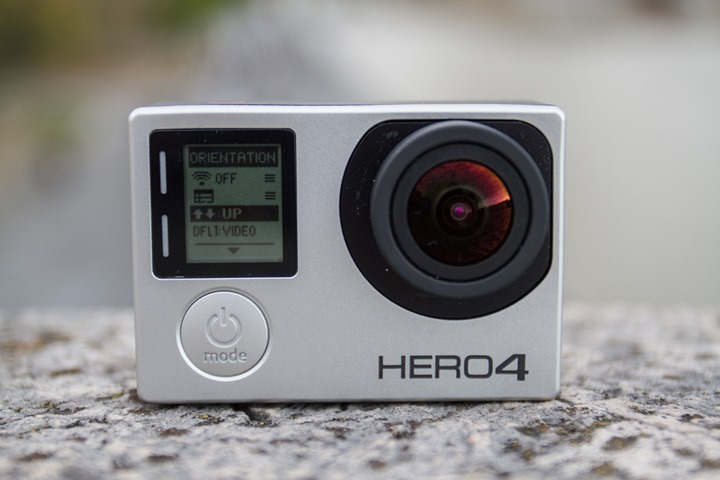
In the February 2015 update, they also enabled the ability to do automatic orientation. This means that the Hero4 Silver and Black can now automatically be oriented based on whichever way is determined as ‘up’. You can also just leave it manually as well.
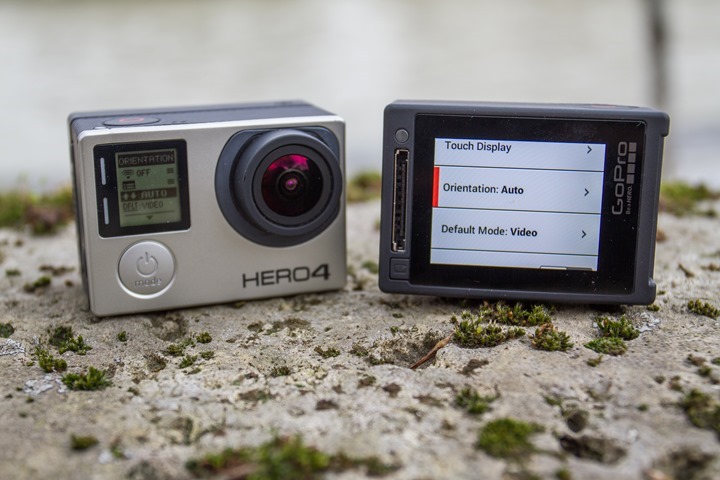
And, you can enable the ability to automatically shut off after a preset time. I like 5 minutes, because that’s typically longer than I’d wait around for any action sequence to happen – and usually means that I’ve forgotten about the camera. Since the GoPro doesn’t save too much battery sitting in standby versus recording – I prefer to keep it off as much as I can.
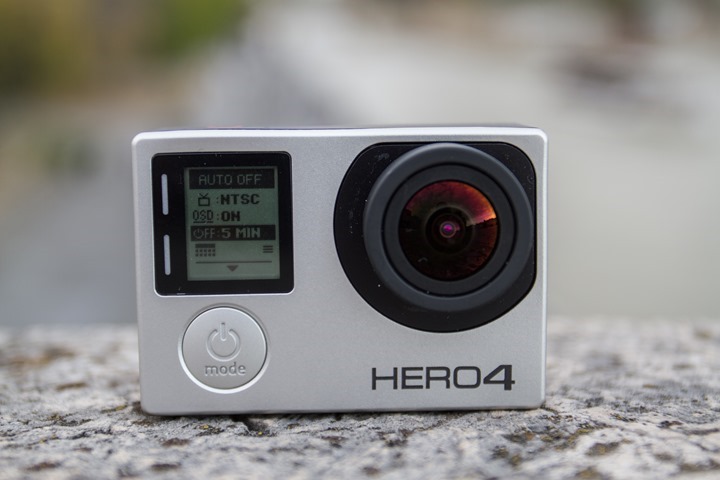
Now, note that on the Hero base, you’ll have considerably less options. For example, there is no option to change which mode it starts in, nor the option to automatically shut off. Though, those are hardly deal killers.
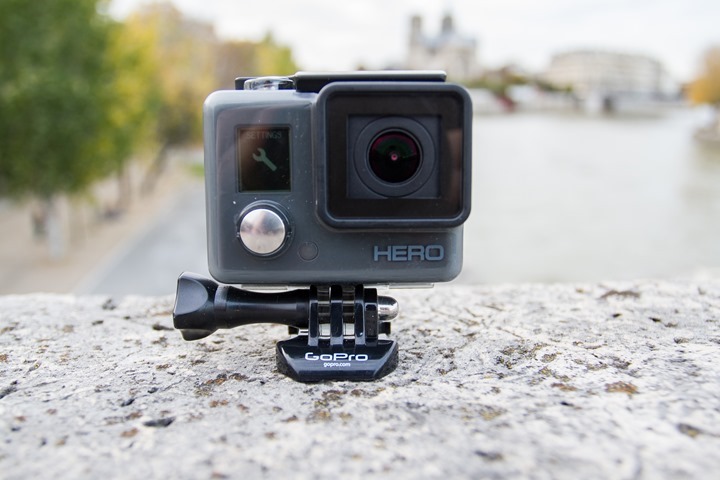
Also note that unlike the Black/Silver, the Hero base can’t have settings changed via the phone apps, but more on that later. Next, when it comes to actually record something, you’ll start/stop the recording (or photos) by pressing the top button on the GoPro (with the red circle).
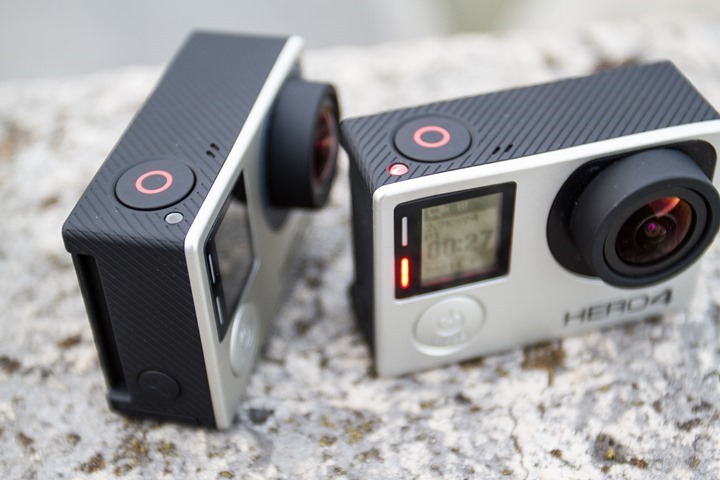
And again, to stop it, you’ll just press the same button. By default the unit will chirp/beep and then the red recording light will blink. You can change the volume of the chirps. I do that if I plan to use the unit indoors where the chirps can get a bit annoying (Side Note: I fail to understand why there is a 100% volume, 75% volume, and 0% volume level…but no 25% or 50% level). Outside of course, it’s handy to have the chirps though if mounted on a helmet. With those basics covered, let’s get onto the Silver-only touch screen, and then I’ll cover many of the features individually.
Touch Screen (Hero4 Silver Only):
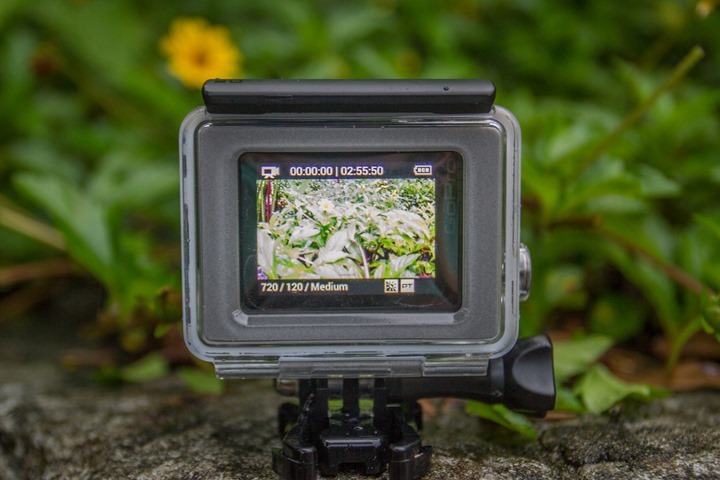
The GoPro Hero4 Silver sports a new addition to the Hero lineup, a touch screen. While you could in the past attach a LCD screen to the back of units, it always came at the cost of increased space as well as just being sorta clunky. With the Hero4 Silver though, it’s embedded into the back of the unit while remaining exactly the same size as previous models.
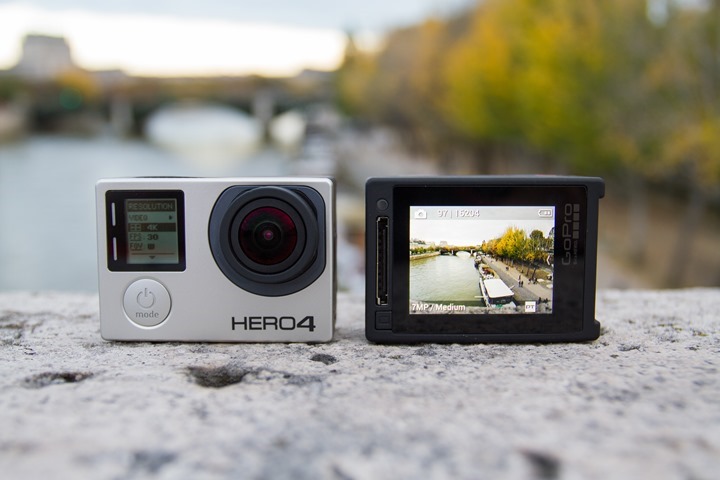
The screen is both there to display what the camera is shooting, but also to act as a touch screen to change settings. To do so, you’ll press the little red dot and then slide down and hold a few seconds. This ensures that you can’t accidentally bump it on, like butt dialing, but for action cameras (which, upon reflection could be really awkward).
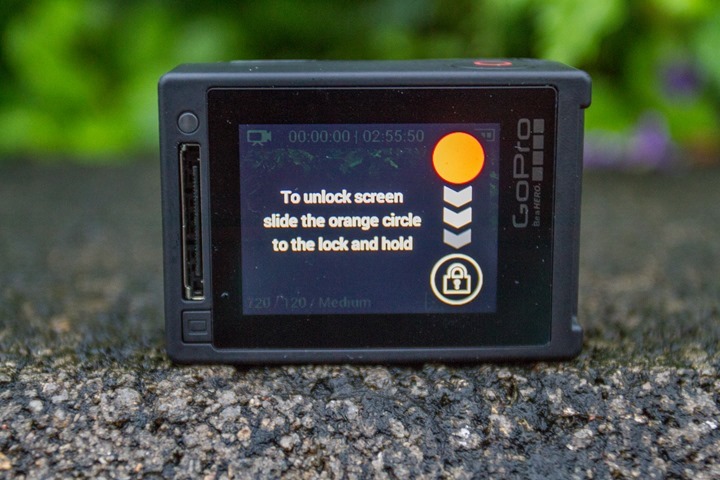
Once you have it unlocked, it’ll show you a touch menu that you can go into and modify settings for each of the modes. You effectively get all of the modification capabilities of the front LCD + buttons, with the back screen:
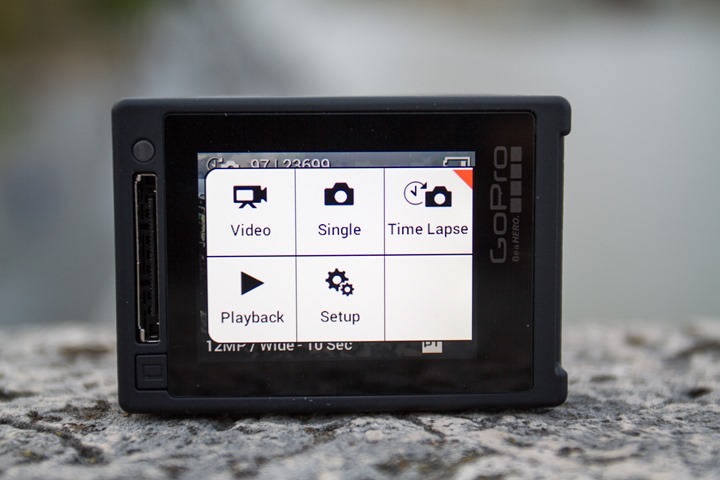
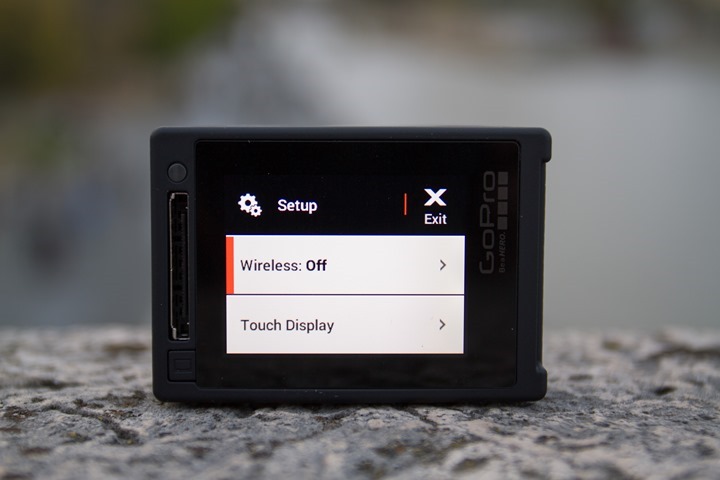
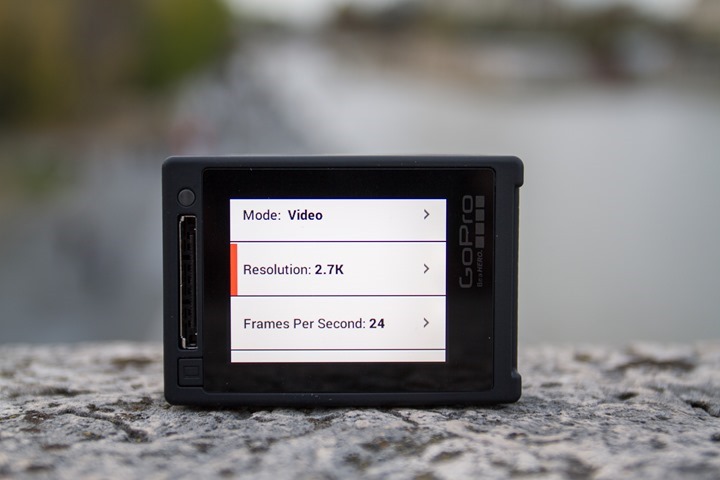
Now of course while recording, you can use this to frame your shots ahead of time and then keep an eye on things while recording. By default it’ll shut off the screen shortly after recording to save battery. I’ve gotta say, when I first saw the marketing images of the screen I figured it’d be like the Garmin VIRB screen. In that while the VIRB screen was marketed to look like a orgasmicly colorful experience, in reality it was like 1930’s black and white silent film.
Thankfully, the Hero4 Silver is legit color. Brilliantly colorful and just as crisp and pretty as the marketing shots look. It’s a bit tricky to take photos of because of the light differential between foreground and the LCD screen, but, you can get a little bit of a feel for it in some of the below:
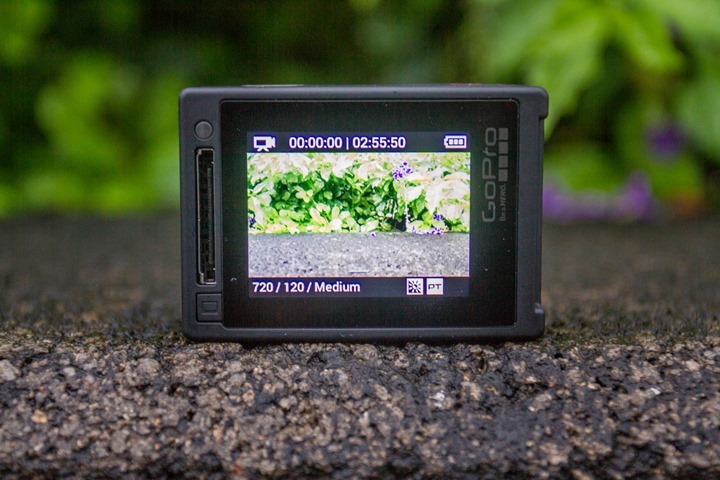
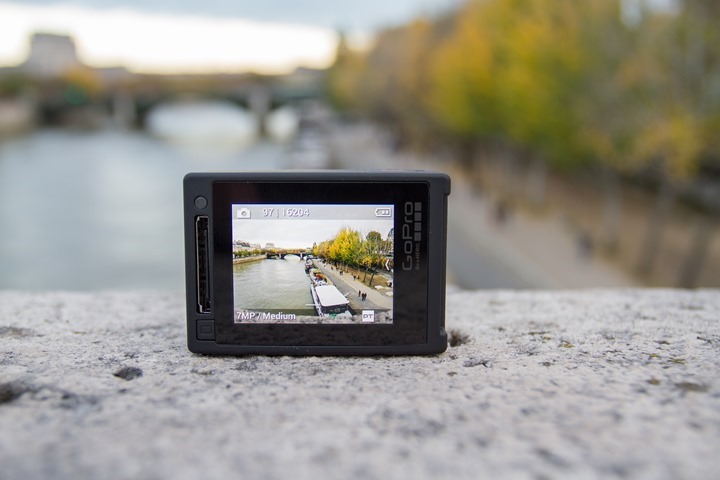
And on top of that, it will playback sound as well. When it comes to a screen on an action camera, this is perfect for me. Or rather, for my wife. I actually didn’t use it nearly as much as her – who loved being able to see exactly what she was shooting and play it back without a phone (as was the case with her cannonballs seen later).
Now with all that praise, do keep in mind one thing: For most folks, the screen is merely used for framing a shot. So while the color is much appreciated, I wouldn’t say it’s a complete deal-breaker. I’m able to frame shots on the 1930’s style black and white screen VIRB just as easily as the Hero4 Silver.
Video: 4K & 2.7K (Black/Silver only):
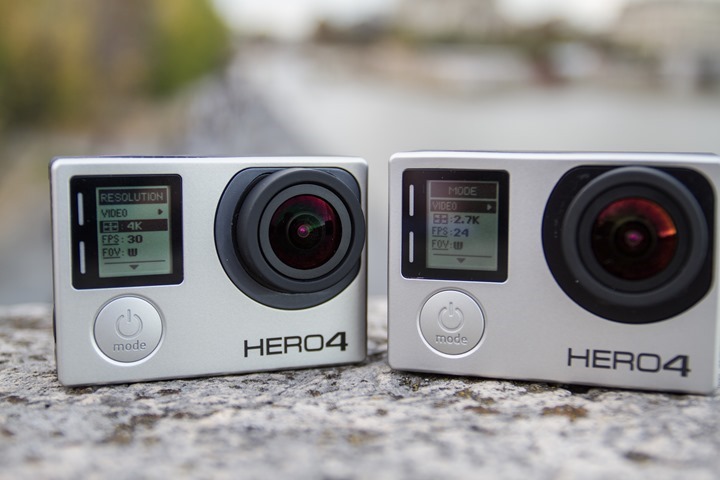
When it comes to video quality in an action cam, nobody has higher resolutions than the GoPro. Period, end of story. Well, at least today. So what does that mean from a practical standpoint? Well with the Hero3+ Black, GoPro offered 2.7K at full frame rates. In this case, full frame rates are anything above 24FPS. Below that and you’ll start to get degradation viewable to the human eye in most situations. So in the case of the Hero3+ Black, it had 4K footage…but at 15FPS. With the Hero4, things simply shifted. The Hero4 Black got full 4K at 24/25/30FPS, while the Hero4 Silver got 2.7K at 24/25/30FPS, and 4K at 12.5/15FPS. So basically, the following happened:
Addition of full frame rate 4K = New Hero4 Black
Hero3+ Black = Hero4 Silver (+ a screen)
Hero3 White = 2014 Hero Base (with a reduction of resolutions/FPS/features)
Now with that in mind, how many more pixels do you get from 4K footage over traditional 1080p or 720p footage? Let’s start with this:
4K: 3840×2160 – 8,294,400
2.7K 4:3: 2704×2028 – 5,483,712
2.7K 16:9: 2704×1524 – 4,120,896
1080p: 1920×1080 – 2,073,600
720p: 1280×720 – 921,600
As you can see, it’s a crap-ton more pixels. But there’s a small catch: The computer you’re viewing this post on right now likely can’t even display 4K footage. 4K capable computer monitors are in the $800 (and Apple’s capable monitor/computer costs $2,500). Although, 4K TV’s are much cheaper, starting around $400-$500US. So if nobody has these devices, why shoot 4K?
There are two reasons: First is simply to start collecting higher quality content knowing that over the next few years 4K resolution will become the norm. But the second is more important: It allows you to crop to a lower resolution. This means that you can take 4K video and crop to a smaller portion of the image and then still maintain 1080p (or other lower resolution).
Here, let this short video clip explain things a bit. In this case I wanted to shoot just the cycling head unit and have it be super-crisp and readable for another post I was doing. It’s tough to do that though while riding and just hand-holding it. But with Premier afterwards I was able to crop down and stabilize just that portion of footage, and still get 1080p detail.
As you can see, I took the 4K video, but then cropped down just a chunk of it to 1080p. Note that cropping is different than downscaling. Cropping means you cut some of the image away. Whereas with downscaling (aka ‘to downres’), you simply convert the entire video down to a lower resolution. You don’t lose any of the picture, but you just lose quality. To explain some of the differences between the two resolutions, here’s a segment where I had all three cameras mounted side by side. Here’s the Hero4 Black (be sure to set the resolution to 4K):
Now, let’s skip down to the Hero base (be sure to set the resolution to 1080p):
Can you tell the difference? For most on smaller screens – probably not. But that’s likely just because you’re viewing it on a device too small to notice the differences. But, this is a key point in deciding whether or not it’s worth the money to pay extra for what is 4K/2.7K over just 1080p resolution found on every other device out there.
Of course, you’re not just paying for resolution – you’re also paying for low light performance. Take for example this video shot in a night market in Thailand. It’s a simple compilation of various food stalls shot at 4K. Despite the low light conditions things came out quite nicely, and I was just hand-holding everything:
Now when it comes to resolutions, keep in mind that while GoPro has action cam dominance today, tomorrow that might change (hence why it’s always good to check out the Product Comparison Tool). In general, I wouldn’t expect any changes between now and the end of 2014. But I fully expect that to change starting with CES the first week of January. CES is the annual and massive Consumer Electronics Show, where everyone in the gadget world comes out with their new stuff.
Typically speaking you don’t see new products available that same week – but rather announced at CES and then available in the months that follow. I’d be happy to bet we’ll see a flood of 2.7K & 4K players announced then. Of course, whether or not they’ll be any good is a totally different question.
Video: High FPS (High Speed):
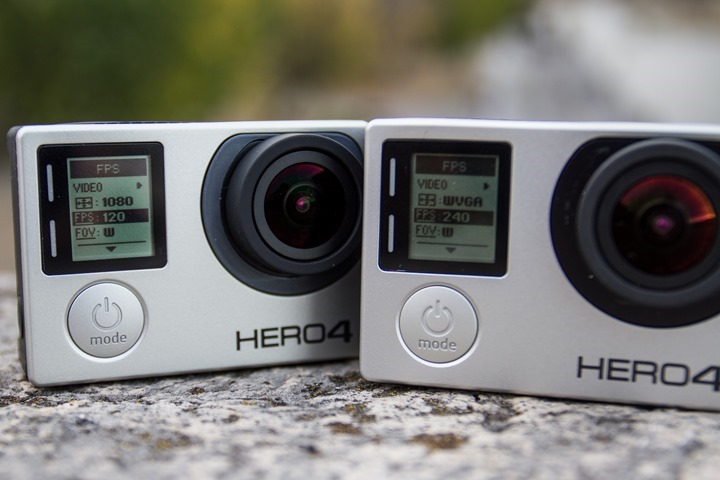
In addition to high resolution video, the GoPro series can also do high speed video. High speed video refers to the idea of increasing the frame rate (frames per second) recorded in order to then play it back at ‘regular’ speed and achieve a slow-motion effect. Take for example 120FPS footage. It’s captured (wait for it) at 120 frames per second. But, when it comes to playback, it might be played back at 30FPS, which then results in that one-second moment of action taking 4 seconds to play back. Thus achieving gloriously smooth slow-motion. You can see this below with a Hero4 Black and a touchscreen attached.
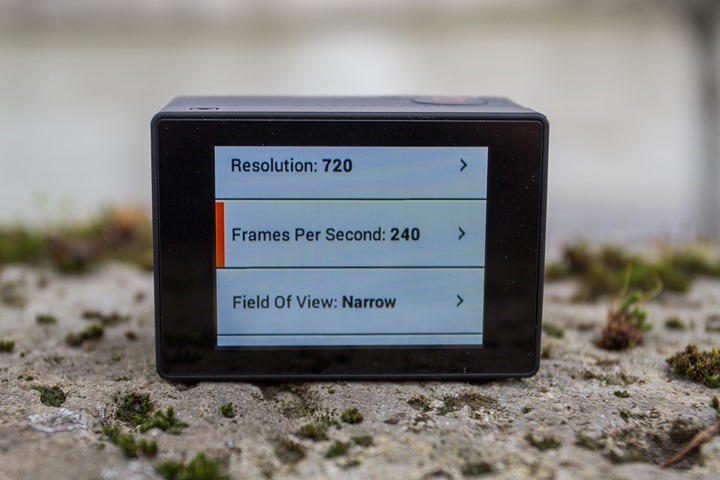
Smooth slow motion is a factor of how many FPS you can capture at, combined with the resolution you can capture. In general, each year the bar gets moved higher and higher for capture rates. So like past years, once again we saw a bump in resolution. This becomes important when trying to incorporate slow-motion video into normal HD programs.
With these higher frame rates at higher resolutions, you’re no longer having to make sacrifices in quality or frame rates for slow-motion footage. Like other settings, on the GoPro you can modify these within the app, or within the camera itself. In the case of base GoPro Hero, you’re only getting 1080P-30FPS, or 720P-60FPS. The exact frame rates offered for each resolution I’ve included within the comparison table at the bottom of the review.
So what does this look like? Well, no better way to test this than a canon ball into a swimming pool. The perfect way to illustrate slow-motion, in this case with a common 120FPS 720p clip (from the GoPro Hero4 Silver):
Now I could have gone to 240FPS on the Hero4 Black, but that reduces the resolution. Previous to February 2015 it was WVGA, but now it’s 720 – which makes it potentially a fair tradeoff. Still, for those wanting to keep it 1080p or higher, you could instead look to slow it down further with the GoPro studio and take the hit on frame rates instead of resolution. In this case, I went with 20% speed playback.

Note that the GoPro Studio offers the ability specify the exact moment in time that you switch from regular playback to slow-motion playback by simply splitting the clips. This allows you to keep at normal speed until just the moment of action, such as this where I kept it regular rates for the first few seconds, then slowed it down when she was mid-air, and then let it get back to half-speed towards the last few seconds.
Further, GoPro has also introduced what they call ‘Flux’. The idea behind it is a bit smarter interpolation of the frames when slowing down video, allowing you to get cleaner video. In the above case I used Flux for the middle section of slow-mo, though, it’s not really required since I shot at 120FPS already and there was plenty of slow motion as-is. But it’s more noticeable if you really wanted to slow things down even further than that.
For example, if you wanted to turn what would have been 4-5 seconds at playback speed into 8-10 seconds. In that case you’d lose so many frames that it might be tough to get smooth video. Note that Flux is all done after the fact within GoPro Studio, and is not something done on the camera itself. It does not require you do anything on the unit itself.

Ultimately, the Hero4 lineup offers the most diverse options in the marketplace today when it comes to high speed frame rate offerings as well as higher resolutions at those frame rates.
Photo Modes (Regular/Night/Burst):
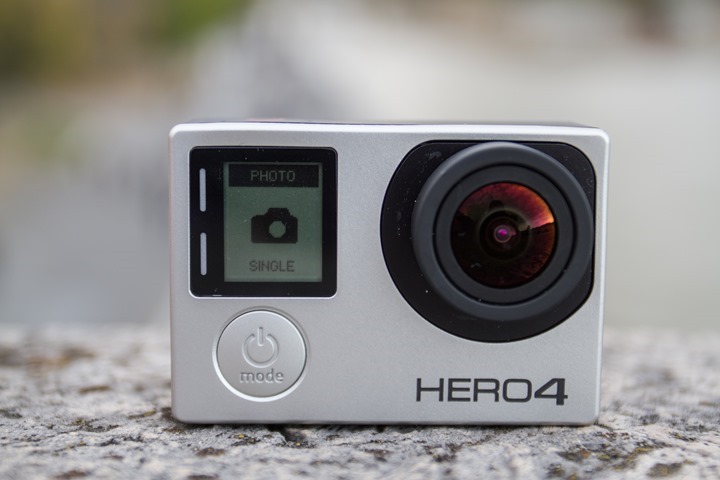
The Hero4 introduced a new night capture mode to the lineup, which aims to compliment the other photo modes found within the unit. Before we dive into the night mode, it’s probably good to start with a quick overview of all the major modes found on the Hero lineup:
Single Shot Mode: This is the most basic, you press a button, and a single photo is taken. I find this best when you know exactly what you’re taking the photo of, without any action-sport ambiguity. For example, you might use this in a marketplace or other non-action setting.
Continuous: In this mode it’ll keep taking photos until you stop holding the button – or until 30 photos is taken. You can define how often it should take photos, but this is handy when you may have a chunk of time where you want to capture a range of activities that aren’t going to occur super fast (for that, you’d want burst).
Burst: This is is for capturing up to 30 photos in one second. Or basically, a burst of photos, as the name implies. This is best when you’re capturing a quick moment of action and you don’t know exactly what might make the perfect shot for later. You can tweak the capture rate a little bit over the course of upwards of 3 seconds. So you could do 10 photos/second for 3 seconds, for example. Or, with the February 2015 update you can do 30/6 as well (30 photos in 6 seconds, or as few as 2 seconds).
Time lapse Mode: This is technically a photo mode, but I’ve broken it out into its own little section, so we’ll talk more about it in the next chunk. But essentially it allows you to create an automated interval of photos – such as every .5 seconds, or 5 seconds, where it just keeps on taking photos until you tell it to stop.
Night Photo: In this case the unit takes the photo mode but adds the ability to customize the exposure setting. This means you can get more light into the camera and take clearer night photos, as well as get photos with light streaks and the sort. Again, more on that in a moment.
Night Lapse: This is the same concept as time lapse, but with with night photos. In this case you can get longer exposure photos that can be merged later as part of a time lapse.
Ok, with those basics out of the way, let’s get to some shots and how I use it. In most cases, when I’m using the GoPro as a camera, I’m shooting in the highest possible megapixel arrangement with the wide option. This is because the way the GoPro works is that even if you were to select a medium crop image, it’s simply taking the 12MP wide image and cropping that automatically. Thus it’s much better to take the higher resolution and do the cropping yourself. For example, below if I wanted just the fish from this GoPro image, I could crop to just the fish and the sea anemone.

Such as this:

But what situations would you want medium over wide? Well, for those where you didn’t want to deal with cropping. For example, The Girl (aka, my wife), borrowed the GoPro Hero4 Silver for the day while snorkeling. She didn’t want the super-wide shots that were coming in on wide mode, and instead preferred the zoomed in aspect of the medium mode. For her, she’s not going to want to deal with cropping the photos afterwards on the computer or her phone. She just wants to be able to take them and post them to whatever platform she wants – no editing.
The good piece is that both options are there (see table later in review for exact options per model), so you can do whatever you’d like. Next, when it comes to how many photos to shoot for each button press, I tend to go with three photos. That allows me a bit of flexibility in case I fudge the shot, and since sometimes they might be slightly-action based (riding or running), I can pick the best out of the three.
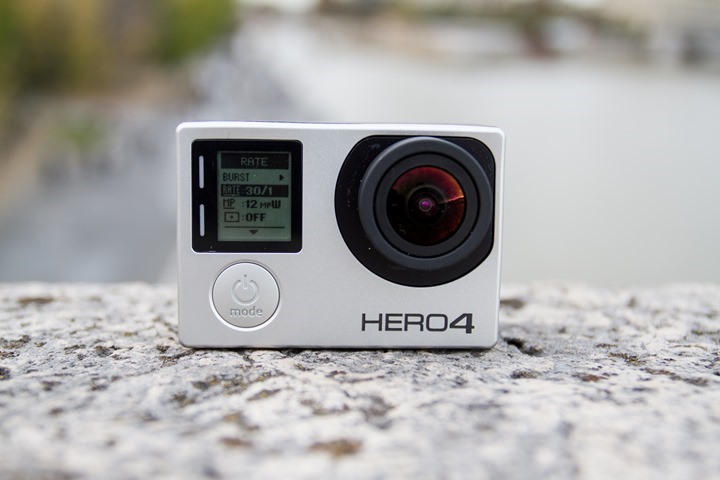
And while I could simply shoot more photos at once, I find that a bit of a pain in the butt later on trying to sift through photos after my activity. Next, you’ve got burst mode. As I noted earlier, this is ideal when you just want to capture a single action-filled moment. For example, jumping off something, where you don’t know if you’d have the precise timing to get the exact photo in just one still. Take the below sequence which I shot of a person jumping off the boat, as an example:

And again, the same here:

In these cases I could then go through each photo to find the ‘best’ photo of the action. Had I just taken my usual three photos, I’d have far fewer choices.
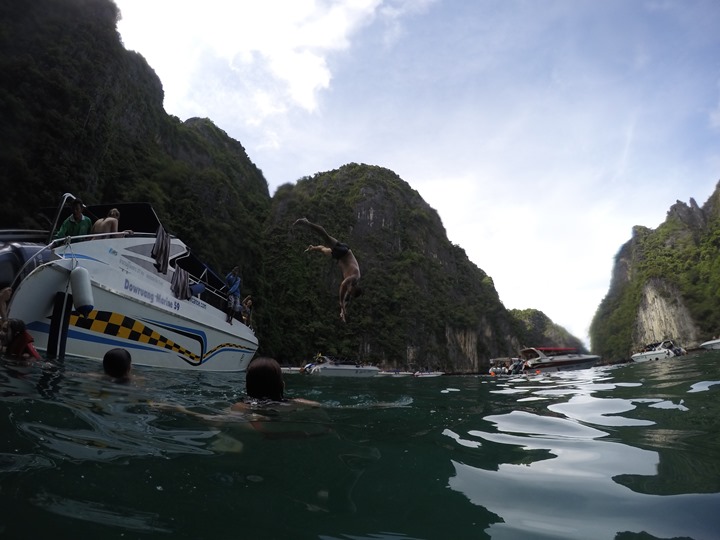
Finally, let’s look at some night shots. In this case, I used the Night Mode to get a longer exposure with the unit. I toyed around with a few different exposures (aside from Automatic), but decided that a 2 second exposure worked out the best. Here’s the un-edited shot from the Hero4 Black:
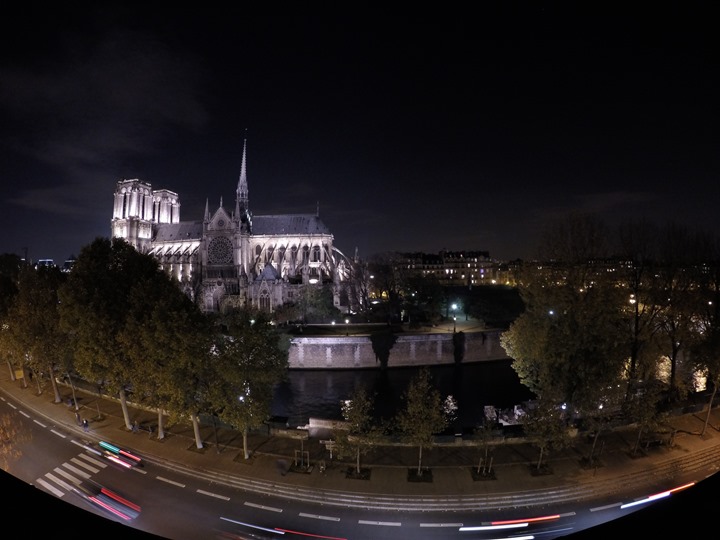
Now this doesn’t mean that the camera can’t shoot at night, here’s the same shot from the GoPro Hero (un-edited), which lacks the night mode:
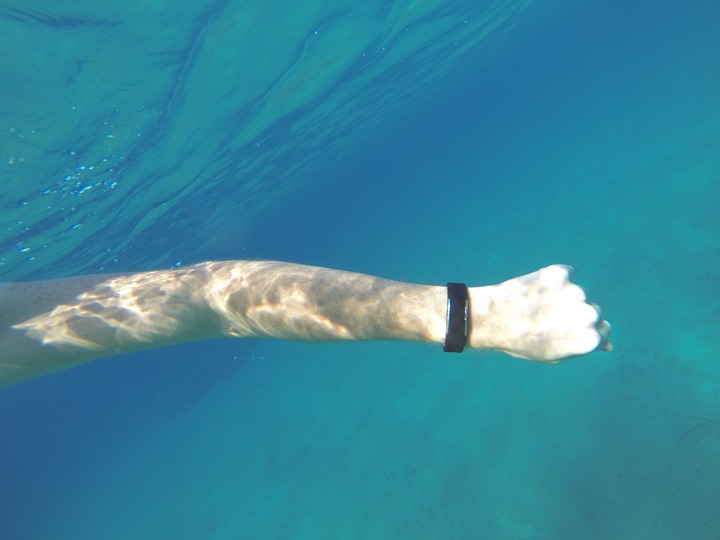
As you can see – the shot still came out quite nice, it’s just that you lack the control over it. It also lacks the ability to compile the time lapse and night modes together, which can be incredibly compelling in the right situations.
Timelapse: Photo:
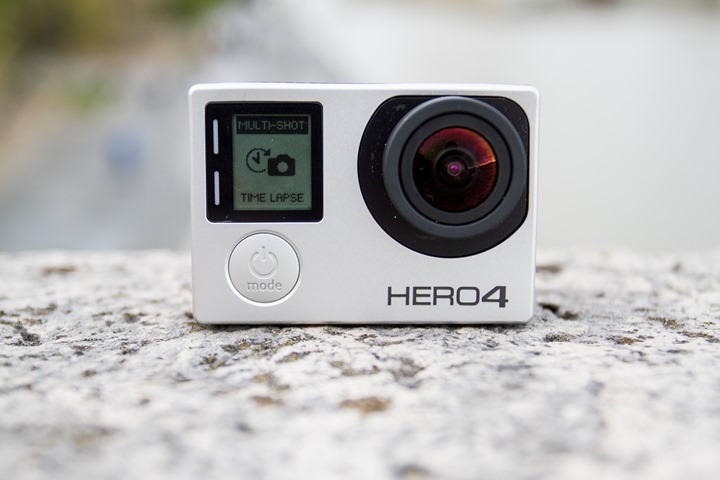
The GoPro series includes a time lapse mode. In this mode the unit will take a series of photos at a preset interval, such as every half a second. You can then take those photos and compile them together to make a video time-lapse. Alternatively, this mode is ideal when you want to simply have photos of/during an event, but don’t know when the moment of action will come (or won’t be in a position to press record).
For example, you might be mountain biking downhill and want to easily capture photos along the way (instead of video). Just plop it in time lapse mode and it’ll capture photos at the defined interval. Why use this instead of video (and then take a screenshot)? Well, the resolution is substantially higher with photos over video. Further, you tend to get crisper photos this way. The GoPro series supports different intervals depending on the model. Here’s the run-down for the 2014 series:
GoPro Hero4 Black: 0.5,1,2,5,10,30,60s
GoPro Hero4 Silver: 0.5,1,2,5,10,30,60s
GoPro Hero (base): .5s only
You can configure this via the settings option on either the app or the camera itself (Black/Silver only).
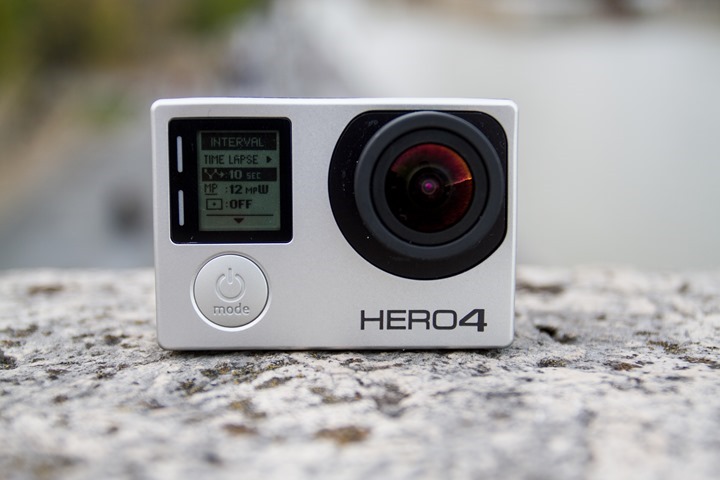
After you take a time-lapse series you’ll end up with a gigantic pile of photos. Seriously, potentially thousands of photos:

Next, you’ll need some software to turn these all into a pretty video. Of course, if you don’t want a video, then you’re just done as-is. For the video, GoPro Studio enables you to drag the photos into the software and it’ll compile it into a video.
There’s two ways of doing this. The first is to just drag the first photo in the series into GoPro studio (and it’ll do the rest automatically). Or, you can manually put them all in a folder and then drag the folder in. Whatever floats your boat:

It’ll automatically compile the clips together and show you the estimated video length.

With that, you can then adjust how fast playback will be. At this point you’ll need to do a bit of mental math on how long you want the video to be. In general, most times you’ll playback video at 24 or 30FPS. In my case, I sped it up 5 times, as the original length was going to be 2 minutes and 20 seconds, which is an eternity sitting watching a single view out my hotel window. So, 1/5th of that seemed appropriate.

Now some of this you’ll want to think through before you even start shooting, adjusted on the camera itself. By default the unit will shoot at .5sec increments. You’ll need to figure out how long you want your completed time-lapse for to determine which settings you’ll use.
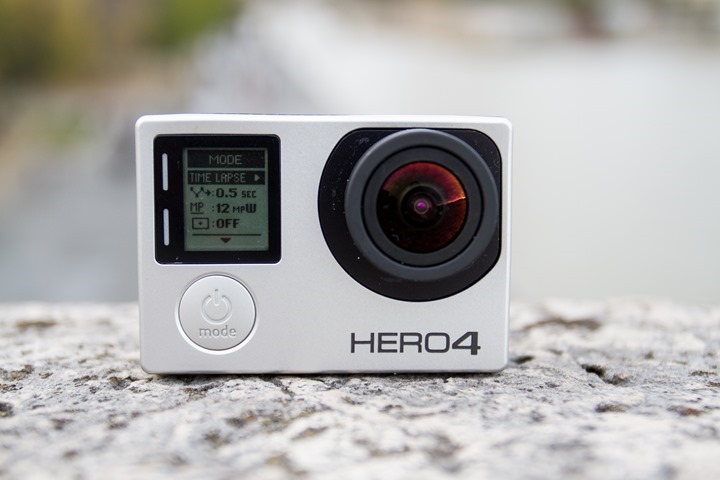
Once that’s set you can then export it all out into one pretty video, such as below:
Now, while this is quite functional – it can be a bit complex for the beginner. This is one area that I’ve previously preferred Garmin’s method with the VIRB. In their case they just build the video for you on the device itself. So as it records each image it automatically compiles it. You can see examples of this in my review within the VIRB In-Depth Review time lapse section. Of course, there are pros and cons to each option.
However, with the February 2015 update for the GoPro Hero4 Black and Silver, it’ll now create that same video for you within the GoPro unit itself. I’ll discuss that in the next section.
Which isn’t to say there’s no reason to do the previous photo method. The photo-driven method means you can take these super-high resolution time lapses and then crop portions for more advanced video editing, such as panning or zooming.
Timelapse: Video:
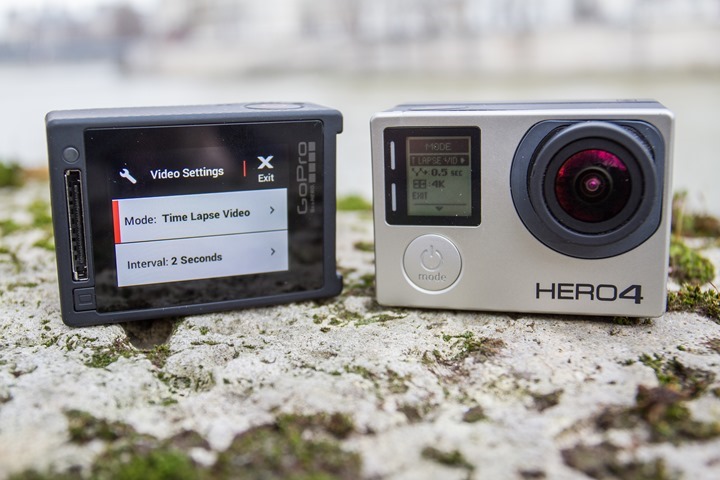
In February 2015, GoPro introduced a new time lapse mode that automatically exports out a video file when you end the recording of the time lapse. This means that when you hit finish on the time lapse on the camera, you immediately have a video file – instead of a huge pile of photos that need additional processing. This option was made available to only the Hero4 Black and Silver models, via a free firmware update.
When you look at the configuration options, they’re identical across both the Black and Silver units. You’ll select ‘Time Lapse’ as an option under the Video settings. Then within that you can select the interval for how often to take a photo to add to the video.
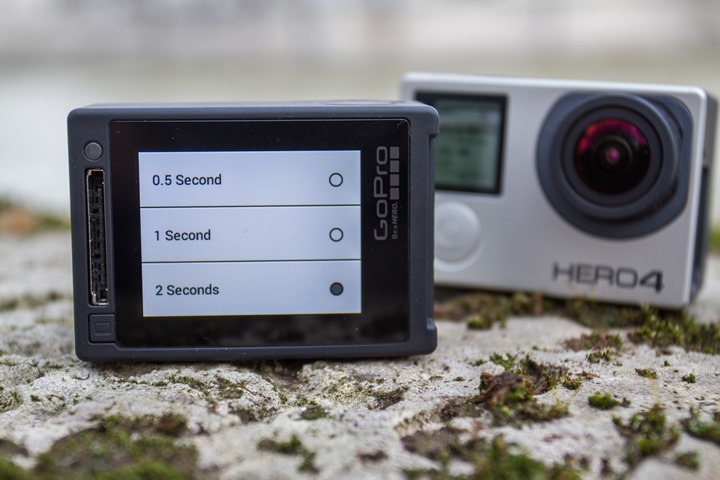
The options for photos are: .5s, 1s, 2s, 5s, 10s, 30s, 60s.
You can then choose between 4K (16:9 format) and 2.7K (in 4:3 format) video to export. There are no lower resolution options.
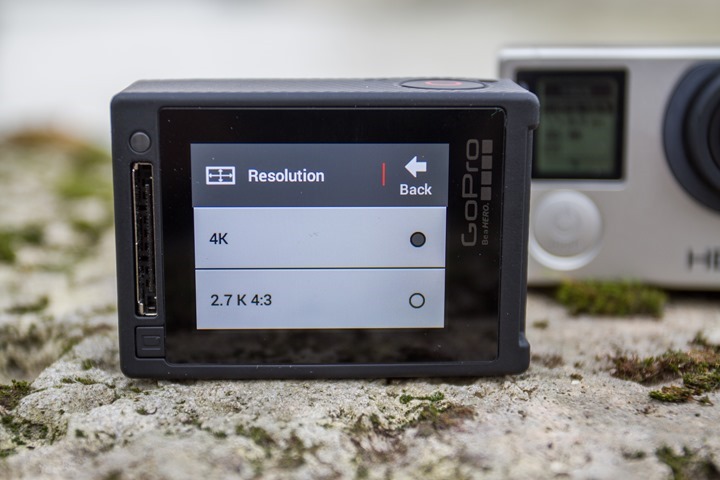
With that, you go ahead and start the camera. For fun, I mounted two units last night outside – one on the roof and one on a window and let it run for about 6-7 hours. I triggered one manually, and one via WiFi. One was set at a lower frame rate, one at a slightly higher frame rate.
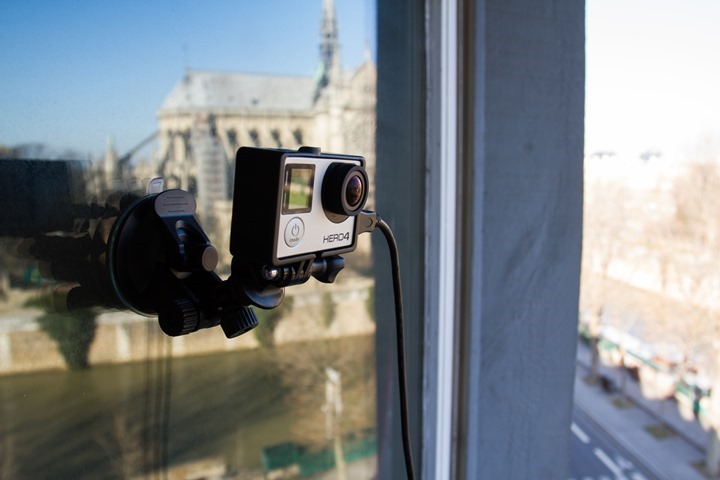
Oh, in case you’re wondering, I had them plugged into the wall via USB so they’d stay powered on.
Then, I went to sleep. When I woke up, here were the results. First up, the roof cam:
And then, the window cam. The view isn’t terribly different. The window cam has the water view, the roof cam has…well..the pigeon, and my disabled smokestack.
One of these days I’ll figure out how to do something more creative on my roof, but it’s a bit tricky since I basically have to use this tiny little window above the tub/shower, and sink. Which typically involves not falling down into the tub in the process.
In any case – there ya go – the video time lapse functionality. Definitely cool stuff, and so much easier to create videos than it would be through the photo method. Of course, as noted in the previous section there are still benefits to the photo time lapse option – especially if you don’t want to make a video at all (such as just capturing photos over a long period to potentially get a very specific/exact moment).
Mobile App (Black/Silver only):
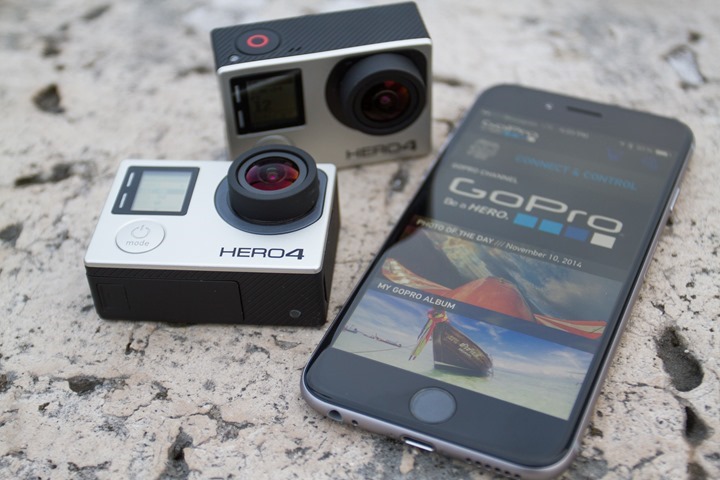
The Hero4 Black and Silver carry through the capability of being able to control and transfer data from the camera to the phone. This allows you to use your phone as a secondary display for the camera, or, just a quick way to get photos up to share with friends via social media. Note, this is not compatible with the 2014 GoPro Hero base unit.
To begin, you’ll need to enable WiFi on your Hero4. Just hold down the left side button until the blue light blinks on the front of the GoPro. Then, on your mobile device connect to the WiFi network.
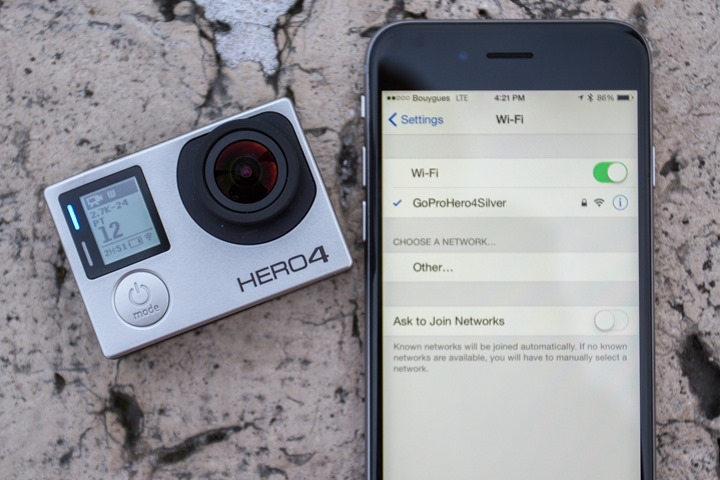
You’ll need to go through a setup of pairing steps before moving forward. They’re fairly straight forward and ensure that you have a unique name for each unit, and unique password. Once that’s done you can go ahead and open up the GoPro app and then click “Connect & Control” to start the connectivity to the GoPro.
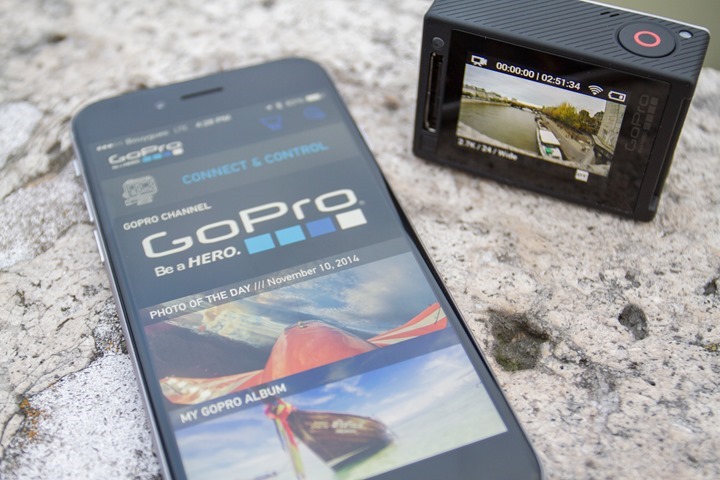
It’ll start on the preview screen, which shows you the exact same view as that of the camera. You can rotate the phone as well to get a cleaner view.
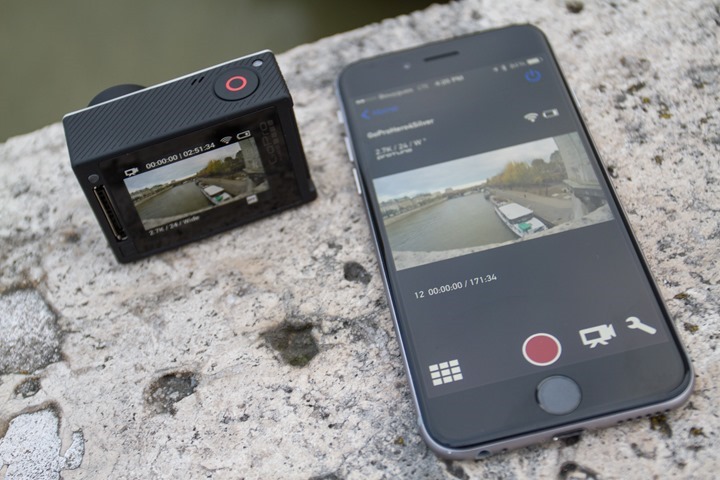
Along the bottom you can start a recording via the big red button, as well as change the mode.
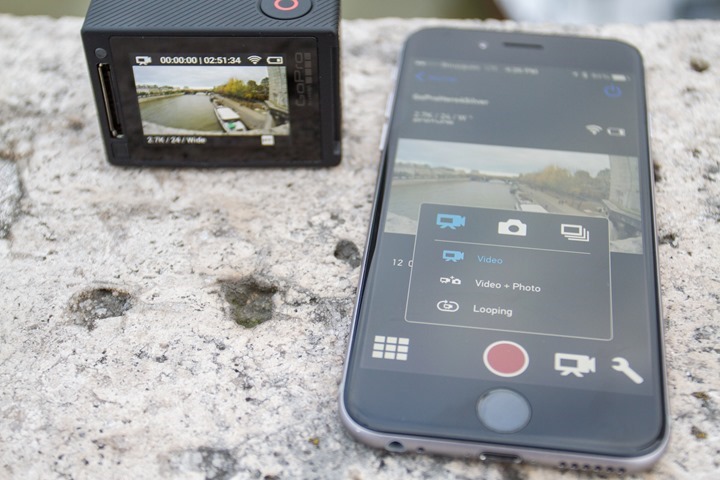
If you click the little tool icon, you can go into the settings and tweak every camera mode and overall camera settings quickly and easily. This is great when you are taking iterative shots at different resolutions or frame rates and don’t want to mess with the camera or touch it physically.
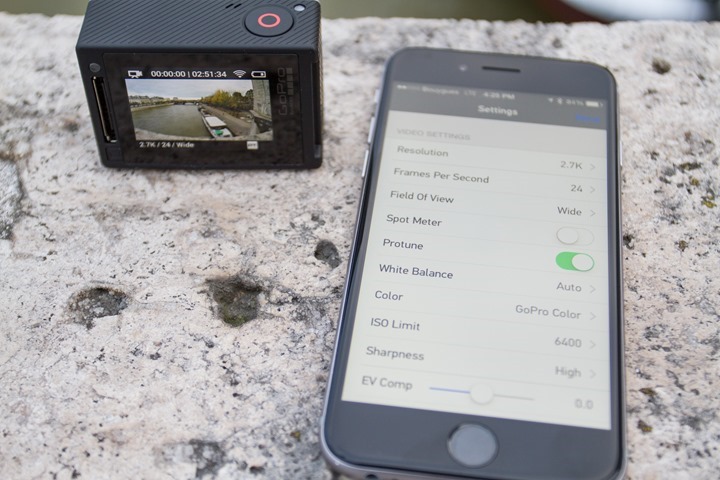
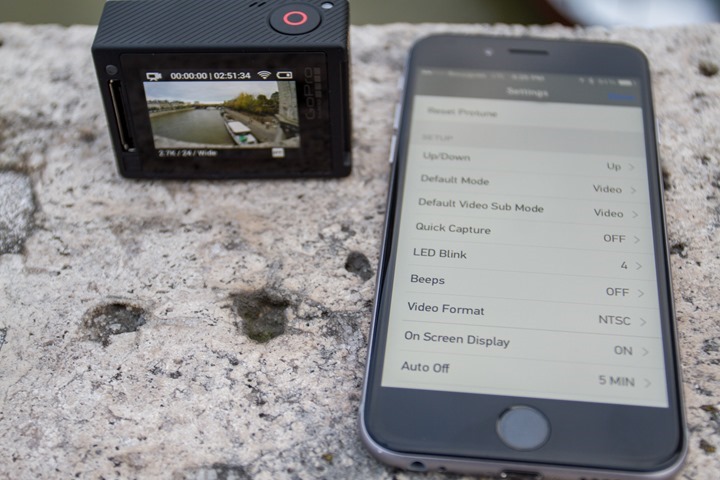
Next, you can transfer both photos and videos. To do this within the GoPro app you’ll tell it to enumerate the files. It may take a few seconds. Or, in the event you have a time lapse pile of photos – it may never actually complete at all (as I learned). Thus, I wouldn’t recommend trying to enumerate it if you just took a few thousand photos.
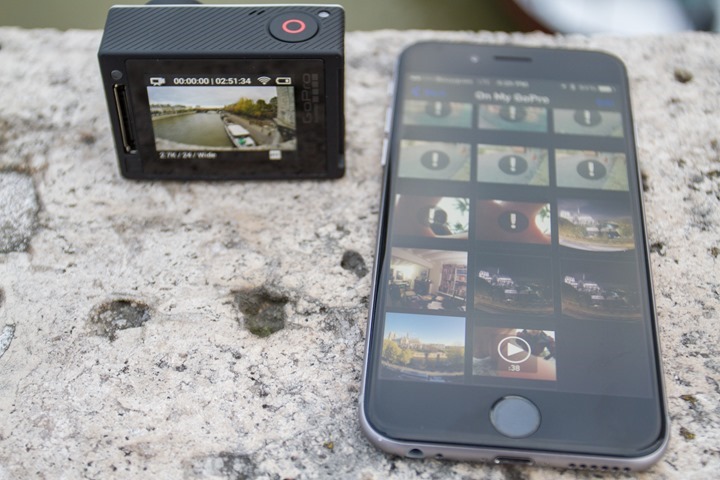
In any event, you can select a given photo and then copy it straight to your local phone album. The same is true of videos as well.
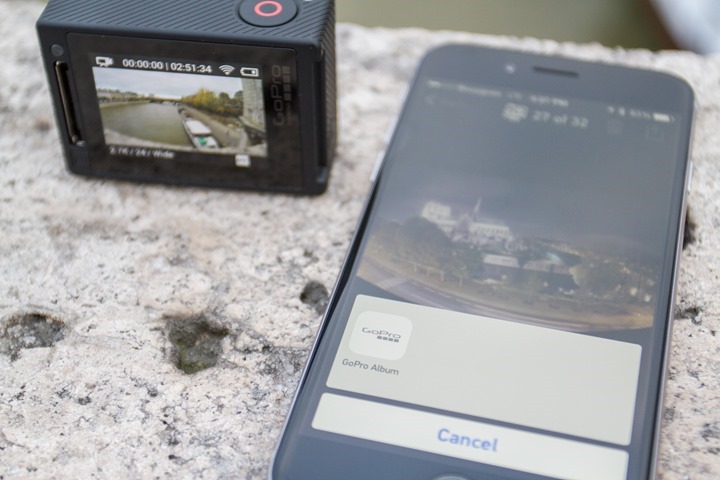
Overall, while seemingly straight forward and potentially simple, the phone app capability on the GoPro app is actually exactly one of the best (if not the best) out there from an action cam perspective. Some other action cams don’t allow live preview while recording, for example. Or, they don’t permit you to transfer files. Or, the apps are just poorly coded.
Live Streaming (Black/Silver only):
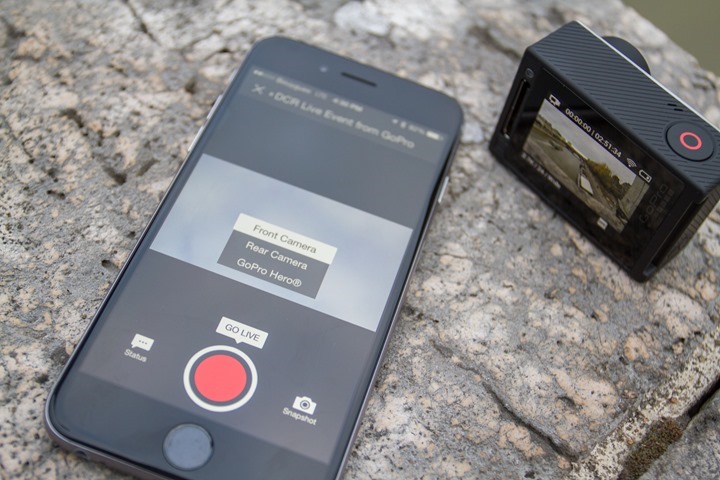
The same week that GoPro announced the Hero4 lineup, they in conjunction with Livestream announced the ability to stream your GoPro recordings live to the internet via the Livestream service. This requires the use of your mobile phone, which connected to the GoPro via the GoPro WiFi network, and then streamed the data out via your cellular data connection.
Initially when I posted this review the functionality wasn’t yet enabled on the Hero4. So, I did some expirements on the Hero3 instead, which you can view here. Since then, the Hero4 support has been enabled with LiveStream.
But, instead of trying to cram it all into this post, I’ve written up a HUGE post on live streaming options for action cams. I cover the GoPro in super-detail, along with numerous other options and apps.
Ports & Connectivity (HDMI/Audio/USB):
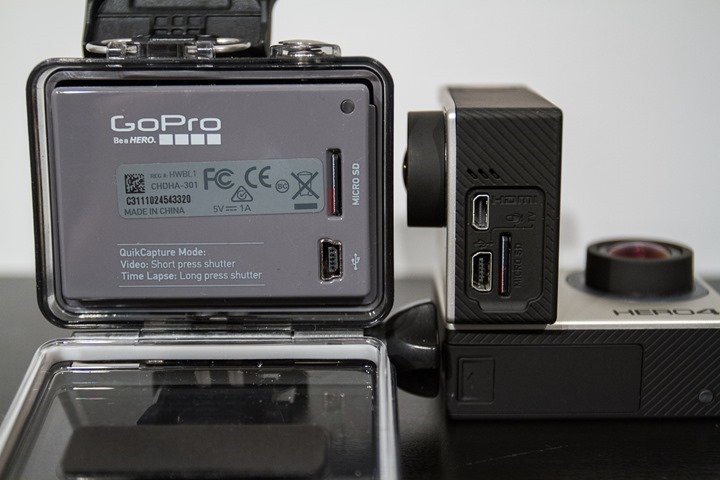
The Hero4 Black and Silver include ports that you can use to stream both audio and video off of the device. The ports are standardized, which means it’s fairly easy to utilize them (in comparison to some action cameras that have funky proprietary connections).
The first port you’ll find is the mini-USB port. The primary use for most people will be charging the GoPro as well as transferring photos/videos to a computer. Those are both fairly straight forward scenarios in that the GoPro will simply show up now as an imaging device on your computer (this is actually a change from previous lines, where it enumerated as a standard USB device):
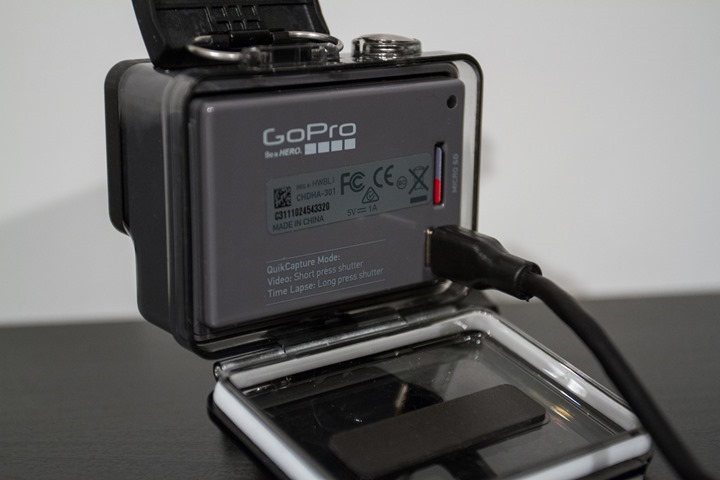
But the mini-USB port is also capable of transmitting and consuming non-digital audio and video to other devices. For example, you can connect the 3.5mm stereo audio connector cable to it, and then plug a microphone to it. Note on the audio connector, that this is only supported on the Hero4 Black/Silver (and older Hero3/3+ units).
Additionally there are some microphones that are only supported on the Hero4 Black Edition. So you’ll want to double-check their compatibility list if you’re using a separate mic. Alternatively, you can utilize one of two different composite video cables. One that includes the 3.5mm mic input, and one without it. In either case, quite frankly most people won’t be doing this as it’s pretty crazy low resolution these days.
Lastly for the mini-USB, it can actually be used by some remote viewing systems directly. For example, on the First Person View (FPV) system I have for my DJI Phantom2 unit, it plugs straight into the mini-USB port and transmits that video, no HDMI required (Note: At the moment, with the standard Zenmuse H3-3D system, this doesn’t quite work yet due to a bug on the Hero4 and/or Zenmuse).
Next, we’ve got the micro-HDMI port. This port enables you to playback video and photos straight to a TV using an HDMI cable. Note though that your regular HDMI cable likely won’t work here, since most HDMI cables you have around the house are standard HDMI connectors are both ends. The micro-HDMI connector is on the GoPro end of the equation and much smaller. You tend to see this also used in some tablets, such as the Microsoft Surface’s and some Android tablets.
The use of the HDMI cable method is commonly done to feed a live external monitor during production as well, for those doing a bit more work from a videography standpoint. When you connect the HDMI cable, you’ll see additional options on your TV as well, a bit of a user interface if you will. This allows you to then navigate the videos/photos and more easily play them back or otherwise check that you got the shot.
ProTune (Black/Silver only)
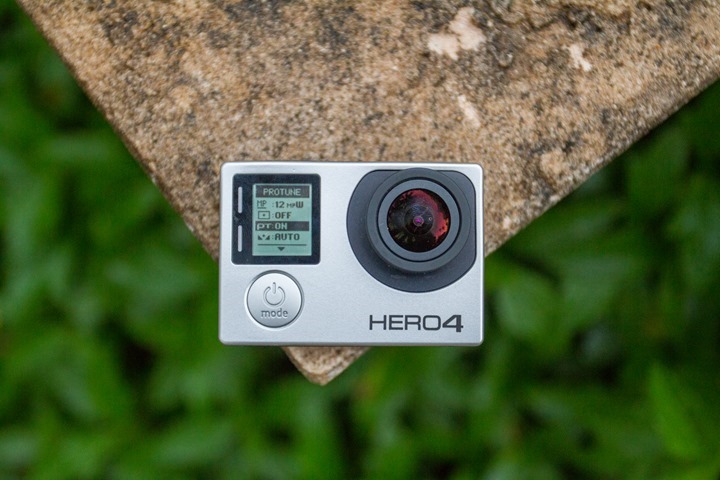
There’s a fundamental reason why you see Hollywood shoot with the GoPro, and the core of that reason is ProTune and the flexibility offered within it. ProTune is one such feature that has long been leveraged in GoPro units to offer more flexibility in editing afterwards. It’s sorta similar (though not exactly) to the way that higher end photographers primarily shoot RAW photos for the ability to better tweak photos afterwards, people also shoot GoPro video with ProTune so they can easily tweak it afterwards. When I talk to ‘tweaking’ I’m referring to the ability to drive change easily in things such as White Balance, ISO, Sharpness and more.
For example, virtually all of the photos you see here on the blog (not just in this post, but all posts) I shoot with higher end cameras in dual JPG/RAW formats. This allows me to clean them up in Lightroom and make any color/lighting corrections as required. The same applies here with GoPro cameras using ProTune with the GoPro Studio. Now this doesn’t actually just apply to video in the case of GoPro, but also to photos. So you have that same power there too.
Now, GoPro notes there’s no downside to enabling ProTune. It won’t make your images/video ‘require’ additional tuning. So you might as well enable it and then decide later if you need it in post production. A better question is whether or not having (or not having) ProTune is a deciding factor.
Ultimately, the thing here to keep in mind is ask yourself whether or not you plan to pour through your videos and spend hours (many hours) editing them. If not, then I wouldn’t let ProTune be a deciding factor in camera selection. If you are spending time in Adobe Premier Pro or Final Cut Pro, then you’re more likely to be aligned to the group of individuals that would utilize such details.
For me personally, I sit on the border. While I live and die by RAW photos in photography around here, I don’t spend quite as much time cleaning up videos since I’m not a terribly great video editor.
Aquatic Adventures:
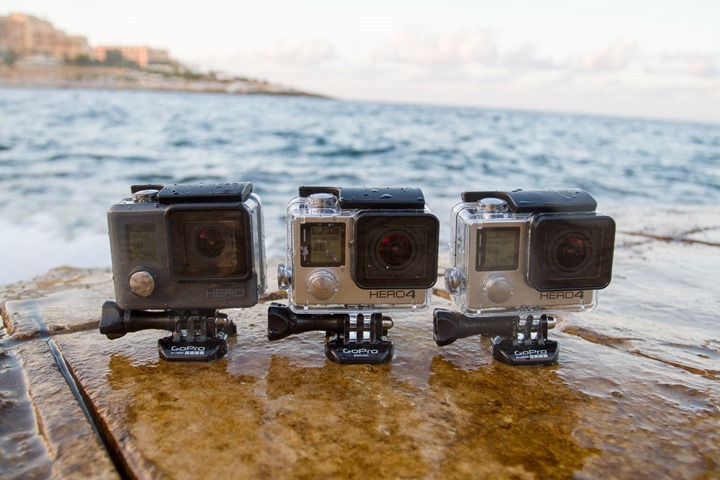
The GoPro 2014 series all include waterproof cases that protect the unit down to 40 meters (131 feet). This is pretty much the max for what a standard openwater PADI/NAUI certified diver would go to (by a little bit). And of course fine for snorkeling and other random pool activities. In the slim chance you’re diving deeper than that, you can get a more hardened case that goes 60m (197 feet). In my case, I didn’t have any dives on my radar for this time period, so it was just limited to snorkeling and pool time. In both cases, I had no problems.
Since the change a few years ago to the flat glass on the dive housing you’ll no longer have any issues with focus problems out of the box. Here’s some non-edited images from the unit (Hero4 Black):


And here’s a similar fish photo from the Hero4 Silver:

Now what is notable is that there’s no water protection issues using the touch screen capable case underwater at least at snorkeling/pool depths. However, you won’t want to try and use the touch screen underwater as the pressure will make it impossible to use. Instead, just use the regular buttons on the side/front/top to change any settings or take any photos.
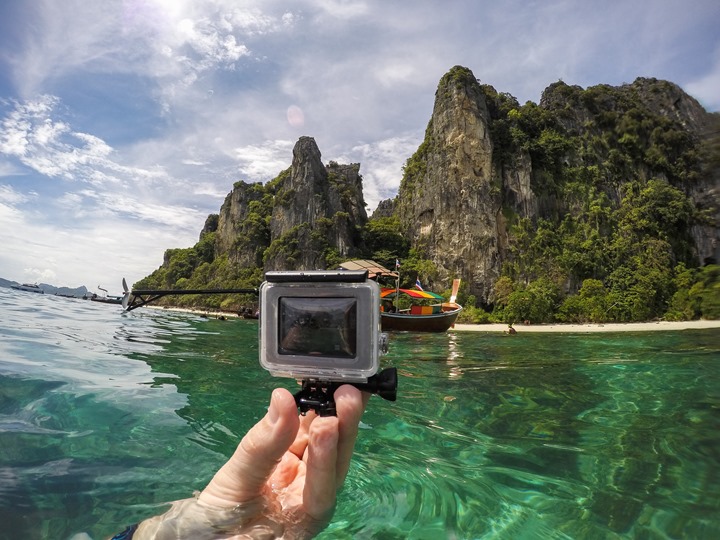
Note that while I didn’t use any of the corrective color filters, you can get such filters, especially if doing diving with the GoPro, which will help correct the colors a bit. For snorkeling and pool shots, you can easily adjust them in the GoPro Studio as well, though I find that leaving a bit of the blueish tint at shallow depths tends to make the images pop a bit more. It’s when deeper that you lose the colors that you want to use the filters.
Finally, in the event you’re doing a lot of water sports, you may want to look at picking up the floating door accessory. That will keep the GoPro afloat in the event it departs from your grasp. If you’re just doing snorkeling or in a pool it’s a bit unnecessary, but if you’re constantly out on openwater it’s probably worth it.
Battery Life:
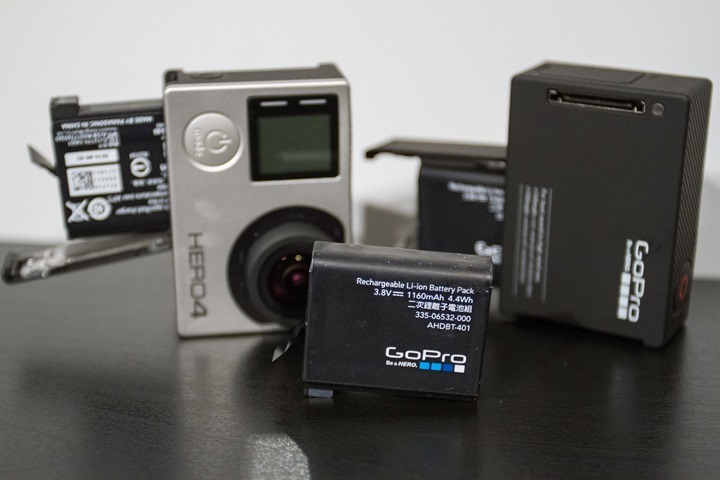
When it comes to battery life, the Hero4 series took a bit of a dive at the top end unit. In previous generations you’d get about 1hr 30 minutes of run-time at the highest recording settings. Now however, the Black unit gets only about 65 minutes at the highest settings. Which isn’t to say that battery life went down across the board. No, if you go to more minimal settings – such as 2.7K 30FPS on the Silver, it’s clocking in around 1hr and 50 minutes. Yet, on the Black it still only gets 1hr 10mins at that setting, despite sharing the same battery. The majority of settings for the Black put it in the 1hr 5min to 1hr 10min range, with only 720p 120FPS extending it up to 1hr 50min. All of these though assume WiFi is off. Both the Hero4 Black and Silver share the same 1106mAH battery.
Meanwhile, continuing the trend of apparently cheaper units getting better battery – the 2014 Hero base units can hit 2hr and 45 minutes at 1080p 30FPS, more the twice that of the Hero4 black at 1/4th the cost. Go figure.
Now, about the only complaint I have about said Hero base unit is that because of the non-detachable case design I’ve found it’s easier for the unit to get turned on during travel in a bag than the Black/Silver out of their cases. And unlike the Black/Silver, it doesn’t have the option to automatically turn off after a period of inactivity. Thus, I’ve had more situations where the Hero base is out of juice when I go to use it.
In my testing with the battery life on the Hero4 Black, I found it got just a few minutes below the specifications. Though, I also found that even while in standby you’re unlikely to get too much more battery if left on (but not recording), which is a bit different than other action cameras on the market that do a much better job in standby.
Now one accessory I have found handy though is the dual battery charger. It connects via standard mini-USB cable and then will charge your GoPro batteries. Note that it works best with a 2AMP USB port, such as those found with an iPad or other tablet. So if you use just a regular amperage USB port you’re likely to get slow charge times. When you insert the battery in, it’ll show orange for charging, and green for completed. Note though that it can be easy the first time to not push the battery in all the way and think it’s doing something. The simple rule is if there’s no light, it’s not doing jack.
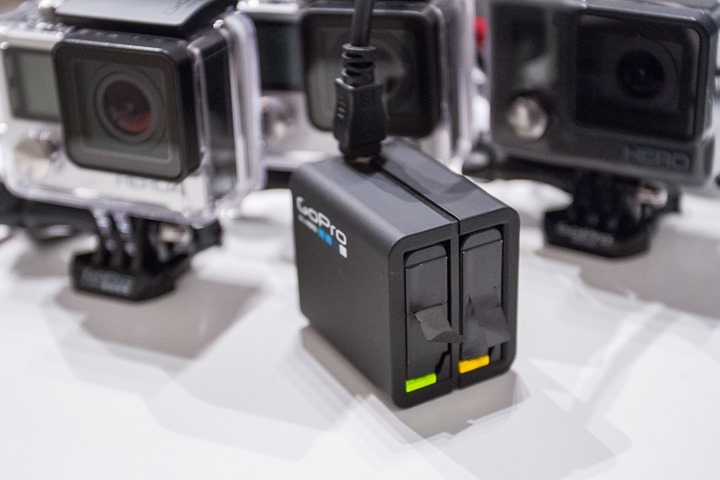
And of course, it probably goes without saying that if you have the Hero4 Black, you’re going to want at a minimum one spare battery.
Now, here’s a bit of a secret though: While the above charger is nice…it’s also overpriced. So instead, I bought the below dual-charger from Wasabi Power which costs only $23 and that includes two Hero4 batteries. Seriously. Pure awesome.
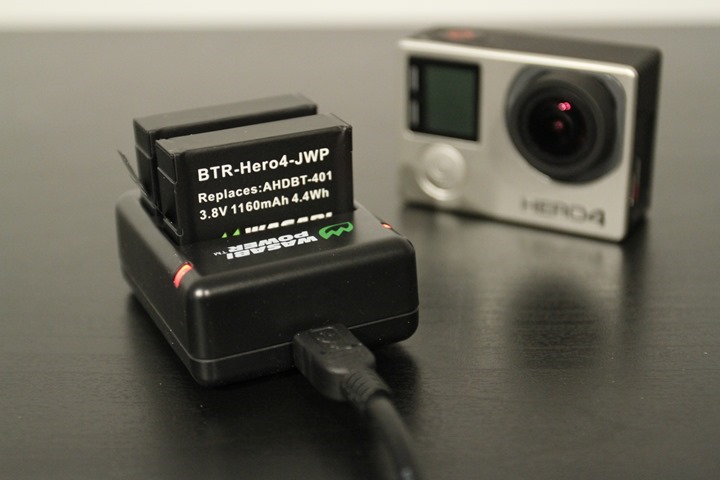
I’ve seen no issues in the last three months since purchasing it, and the batteries seem to get the same amount as the original batteries.
Accessories:
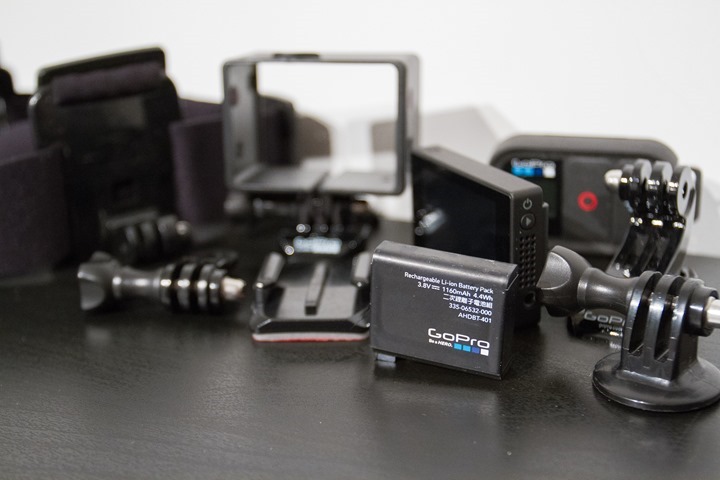
When it comes to accessories, there’s no greater selection than that with the GoPro lineup. Heck, even other action cams now include GoPro adapter mounts, simply to be able to tap into the massive range of accessories and mounts found within the GoPro lineup. The majority of mounts that most folks will use will likely be 1st party mounts made by GoPro, but there’s still a huge array of 3rd party mounts by other companies that are oftentimes far more interesting.
Here’s a listing of all the mounts/accessories available for the Hero lineup (inclusive of Black/Silver only accessories such as remotes/batteries):
Copyright DC Rainmaker – Updated July 15th, 2016 @ 6:58 am
GoPro Combo Cable (HERO3/3+ only)
3DRobotics IRIS+ Multicopter 915Mhz (has GoPro mount)3DRobotics$750LinkLinkN/A
DJI Phantom 2 (for GoPro)DJI$699 (+ mounts)LinkN/ALink
Feiyu Tech FY-WG 3-Axis Wearable Gimbal for GoProFeiyu Tech$319LinkLinkLink
GoPole 26″ Transparent extension pole for GoProGoPole$40LinkLinkN/A
GoPole Compact Hand Grip for GoProGoPole$23LinkLinkN/A
GoPole Floating Hand Grip For GoProGoPole$30LinkLinkN/A
GoPole Telescoping Extension Pole for GoPro (17″-40″)GoPole$55LinkLinkN/A
GoPole Weather Resistant Softcase for GoPro CamerasGoPole$27LinkLinkN/A
GoPole Helmet ExtensionGoPole Helmet Extension$20LinkLinkN/A
GoPro 3-Way Grip/Arm/TripodGoPro$69LinkLinkLink
GoPro BacPac™ Backdoor Kit (for Standard Housing)GoPro$10LinkLinkN/A
GoPro Blackout HousingGoPro$30LinkLinkN/A
GoPro Chest Mount HarnessGoPro$24LinkLinkN/A
GoPro Composite Cable (HERO3/3+ only)GoPro$11LinkLinkN/A
GoPro Curved Adhesive MountsGoPro$20LinkLinkN/A
GoPro Dive Housing (HERO3/3+ only)GoPro$50LinkLinkN/A
GoPro Dual Battery ChargerGoPro$30LinkLinkN/A
GoPro Fetch (Dog Harness)GoPro$59LinkLinkN/A
GoPro Flat Adhesive MountsGoPro$11LinkLinkN/A
GoPro Front MountGoPro$8LinkLinkN/A
GoPro Grab Bag of MountsGoPro$11LinkLinkN/A
GoPro HDMI Cable (HERO3/3+ only)GoPro$16LinkLinkN/A
GoPro Handlebar/Seatpost/Pole MountGoPro$8LinkLinkLink
GoPro Head Strap Mount + QuickClipGoPro$20LinkLinkN/A
GoPro Jaws Flex Clamp MountGoPro$36LinkLinkN/A
GoPro Jaws Flex Gooseneck OnlyGoPro$20LinkLinkN/A
GoPro Junior Chest Mount HarnessGoPro$22LinkLinkN/A
GoPro LCD Touch BacPacGoPro$79LinkLinkN/A
GoPro Rechargeable Battery (Hero3/3+ only)GoPro$20LinkLinkN/A
GoPro Roll Bar MountGoPro$16LinkLinkN/A
GoPro Side MountGoPro$7LinkLinkN/A
GoPro Smart RemoteGoPro$79LinkLinkN/A
GoPro Standard Housing Lens Replacement Kit (HERO3/3+ only)GoPro$20LinkLinkN/A
GoPro Suction Cup MountGoPro$26LinkLinkN/A
GoPro Surf MountsGoPro$11LinkLinkN/A
GoPro Tripod MountGoPro$10LinkLinkN/A
GoPro Vented Helmet Strap MountGoPro$7LinkLinkN/A
GoPro Wi-Fi Remote Mounting KitGoPro$13LinkLinkN/A
GoPro Wrist Housing (HERO3/3+ only)GoPro$27LinkLinkN/A
KNOG Qudos Action LightKnog$119LinkLinkLink
Wasabi Power Dual GoPro Hero4 Charger with 2 batteries (DCR Favorite)Wasabi Power$23LinkN/ALink
When it comes to my favorite mounts that I use, here’s my favorite two:
1) GoPro 3-way Pole: This came out last winter and instantly became my favorite accessory. As you can see from the below animated image I put together, you can twist/mix/fold/unpack/pack it up a crapton of ways. I can use it as a tripod, or as a selfie pole, or just to get a better angle and extend my reach.
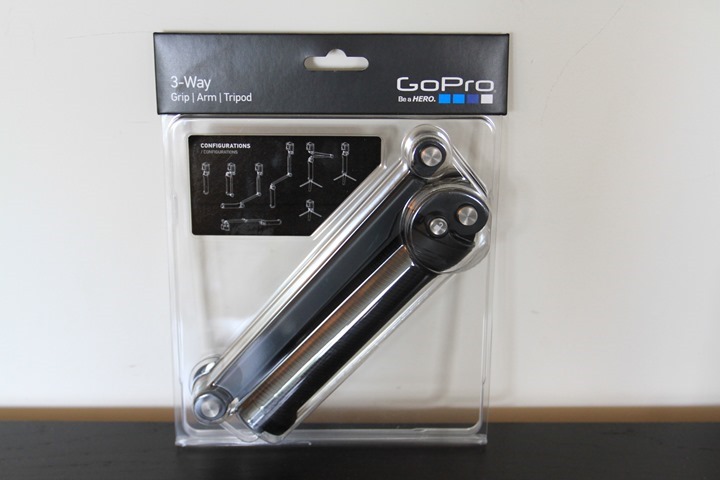
For example, I use it all the time to get shots on a bike of bike components mid-ride, such as in this post about the automated shifting system, or this one about the radar system. It’s simply incredibly versatile.
2) K-Edge bike mounts: If you’re mounting to a bike or similar handlebar, I use these mounts constantly. The forged metal means it holds it tight with no play. While at first I would have thought they were overpriced, you come to realize that the single biggest factor in smooth video while riding is ensuring the mount doesn’t flex or move.
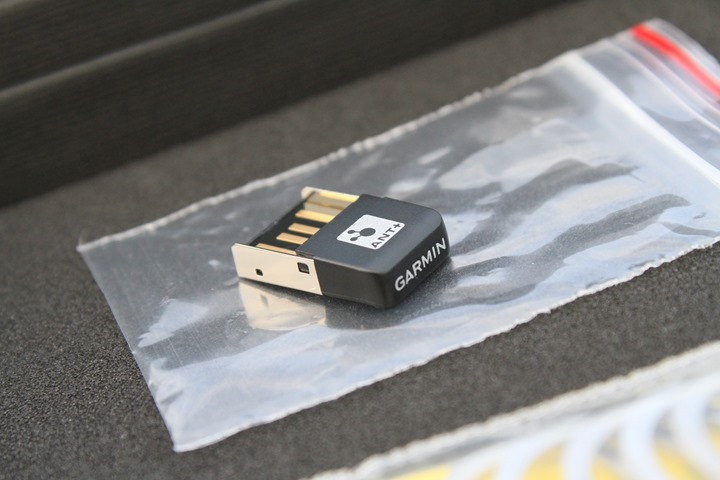
I primarily use the out-front mounts, but also do play around with the rear facing under-seat mount. This mount allows me to get shots facing backwards – ideal for group rides. Of course, I use all sorts of other random mounts from time to time, but the vast majority of my shooting comes from these two.
Aerial Imaging:
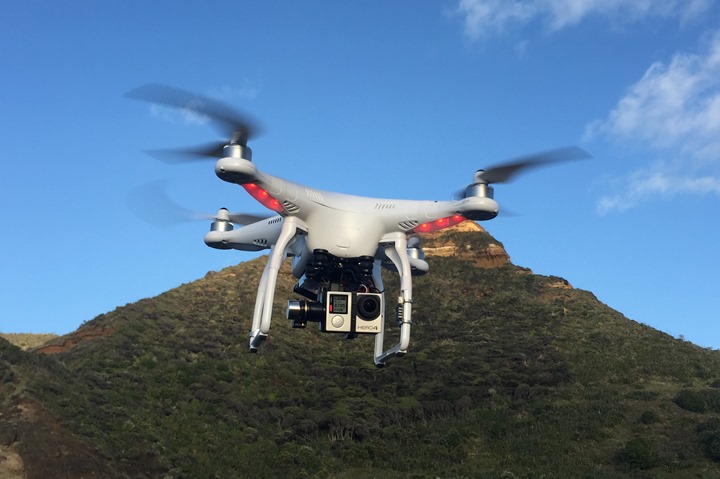
Like most photo-minded people, I’m always looking for ways to get unique shots. Over the last few years one of the most popular methods is via remote controlled quadrocopters, such as as the DJI Phantom series. These are more commonly known as drones.
In my case, I bought the DJI Phantom 2 last winter and have been experimenting with it to get cool shots and videos. From a setup perspective, I use the GoPro Hero4 with the DJI Phantom 2 in conjunction with the Zenmuse H3-3D gimbal. This gimbal is really the special sauce that allows silky smooth footage. Proof of that comes with the fact that the wind was never less than 10-15MPH during my flights in New Zealand.
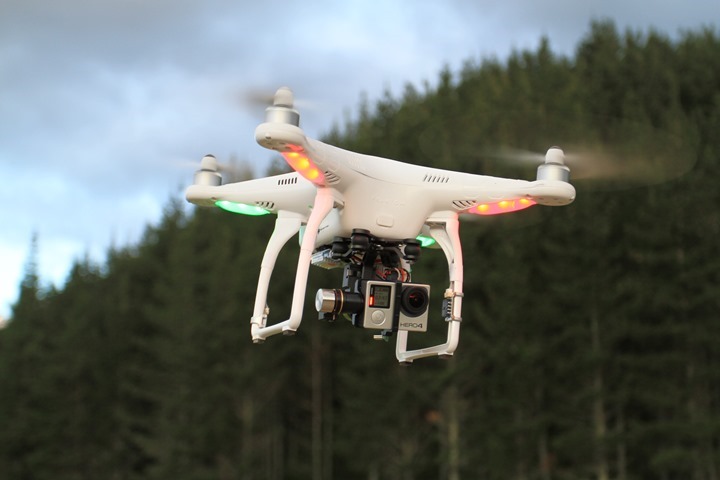
There were two H3-3D gimbal versions out there – the first gimbals require a slight modification to not bump the side settings/WiFi button on the Hero4, whereas the second generation is molded just a hair bit differently and doesn’t require any modification. Luckily I have the second version.
Note that both the Hero4 Black/Silver work just fine in the mount, but the Hero base edition won’t because it can’t be removed from the case. While I have a first person view transmitter for the system, I don’t tend to use it too much, instead just flying within line of sight and by feel. I flew remote control and real planes when I was younger, so I have a bit of experience there in the aviation world.
Most of the imaging I do with the DJI Phantom is related to video, primarily because it’s considered risky to try and use the WiFi enabled remote shutter with the unit inflight (it supposedly messes with the wireless communications). So while I could put it on time lapse mode and capture photos at random, I instead choose to capture videos. From those videos I can capture cool still photographs – like the below:
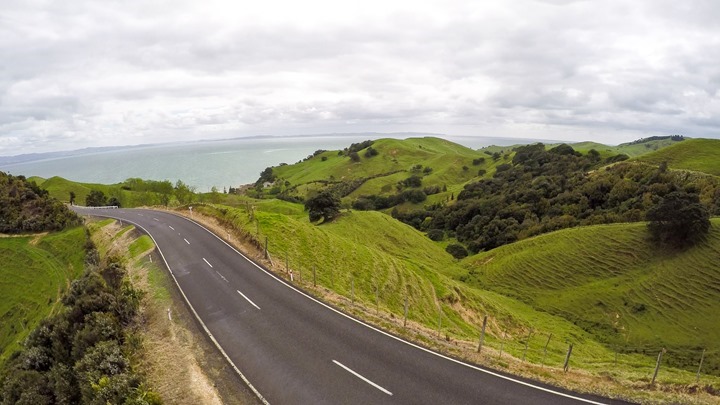
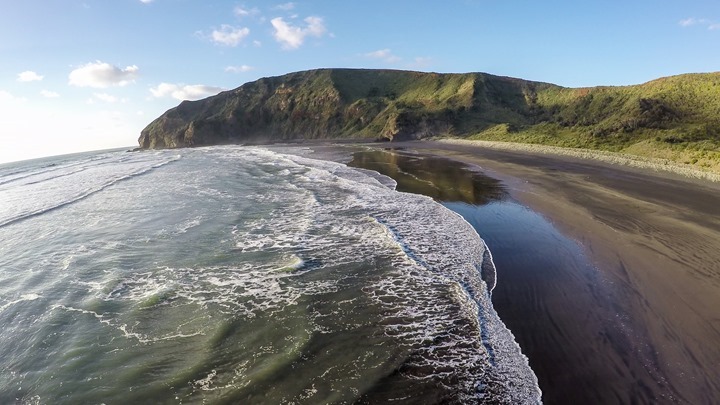
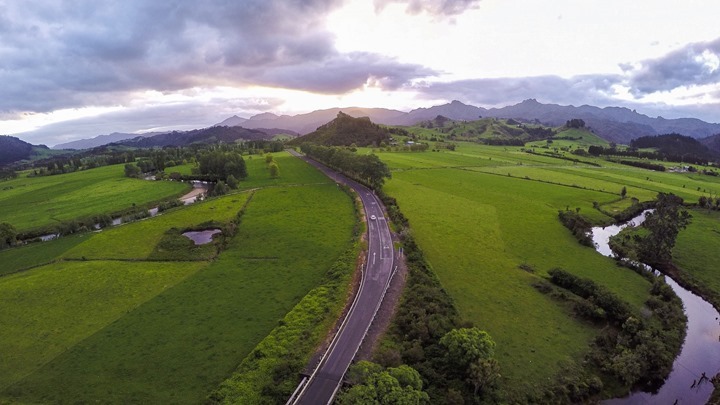
Of course, with a gimbal video is the name of the game. While down in New Zealand over the past few weeks I was able to get a number of shots put together. Here’s one session I did just after sunrise on an isolated black sands beach with the Hero4 in 4K/24p mode:
The footage was then run through Adobe Premier where a handful of segments had the Warp Stabilizer run on it to clean up some minor wind gusts. In this case, ProTune was not enabled on the content. Overall I’m pretty happy with the results given how it was just about 15 minutes of flying before the rain started and forced a landing.
Finally, I’ve recently written up a whole piece on a variety of drones usage with the GoPro and other action cams, which you can read here.
Note: This should go without saying, but if you use a quadrocopter to capture cool stuff, please don’t be an idiot in doing so. Seriously. Use common sense, follow your local laws, and try and not ruin it for the rest of us. Nuff said!
Comparison Charts:
You can use the below comparison charts to see how each unit stacks up against each other. In the below chart I’ve just set it for the three GoPro units for 2014. However, you can easily dive into the comparison database to see how older GoPro units stack up, as well as some competitor units. You can mix and match and create your own charts there.
Copyright DC Rainmaker – Updated November 25th, 2016 @ 7:18 pmNew Window
Price$499$399$129
AvailabilityGlobalGlobalGlobal
WiFi BuiltinYesYesNo
Bluetooth to PhoneYesYesNo
Recording LightYesYesYes
GPS builtinNoNoNo
Altimeter builtinNoNoNo
Water Resistant40m with included case40m with included case40m with included case
AccellerometerNoNoNo
Video Preview ScreenAccessoryYesNo
Voice ControlNoNo
Recharges viaMini-USBMini-USBMini-USB
Removable batteryYes / 1160 mAhYes / 1160 mAh1180 mAh (non-removable)
Recording TimeUp to 1hr 50min, 65min at 4K2 HoursUp to 2.5 hours
Secondary attached batteryAccessoryAccessoryNo
Storage Card TypeMicroSD CardMicro-SDMicroSD Card
Maximum Card Size64GB64GB32GB
Records 360* VideoNoNoNo
4K24/25/30 fps12.5/15 fpsNo
2.7K24/25/30/48/50/60 fps24/25/30 fpsNo
1440p24/25/30/48/50/60/80 fps24/25/30/48 fpsNo
1080p24/25/30/48/50/60/80/90/120 fps24/25/30/48/50/60 fps30 fps
960p50/60/120 fps50/60/100 fpsNo
720p25/30/50/60/120/240 fps35/50/60/100/120 fps60 fps
WVGA240 fps240 fpsNo
Automatic Image RotationYes (Feb 2015 update)Yes (Feb 2015 update)No
Image StabilizationNoNo
Looping RecordingsYesYes
Timelapse Mode (constructs timelapse video)Yes (Feb 2015 update)Yes (Feb 2015 update)No (requires desktop software)
Travelapse ModeNoNo
Pro Settings ModeYesYes
Internal MicrophoneYesYesYes
Supports Bluetooth MicrophonesNoNo
Pro mode with seperate tracksNoNo
Megapixels12 MP12 MP5MP
Timelapse Mode (photos on interval)0.5,1,2,5,10,30,60s0.5,1,2,5,10,30,60s0.5
Burst ModeUp to 30 photos/secondUp to 30 photos/secondUp to 5 photos/second
Continuous Shooting ModeYesYesNo
Concurrent w/video modeYesYesNo
Records 360* PhotoNoNoNo
Pro Settings ModeYesYes
RAW photo creation supportNoNo
Skiing ModeNoNoNo
Control from sport computerNoNoNo
ANT+ Sensor ConnectivityNoNoNo
Bluetooth Sensor ConnectivityNoNo
ANT+ Profile TypesNoNoNo
Overlays sport data on recordingNoNoNo
App platforms availableiOS/Android/Windows PhoneiOS/Android/Windows PhoneNot compatible
Use as remote controlYesYesNo
Stream live video previewYesYesNo
Record video from cameraYesYesNo
Multi-camera live control/previewNoNONo
App for computerGoPro StudioGoPro StudioGoPro Studio
Remote control button/keyYesYesNot compatible
Diving caseIncludedIncludedIncluded
Head StrapYesYesYes
Helmet StrapYesYesYes
Handlebar/SeatpostYesYesYes
TripodYesYesYes
Suction CupYesYesYes
Chest HarnessYesYesYes
Wrist Strap/HousingYesYesYes
Roll BarYesYesYes
SurfboardYesYesYes
Curved AdhesiveYesYesYes
Flat AdhesiveYesYesYes
Adjustable Mounting ArmsYesYesYes
USB Connector TypeMini-USBMini-USBMini-USB
Micro-HDMIYesYesNo
Composite VideoAdapter AvailableAdapter AvailableNo
Audio 3.5mm Stereo MicAdapter AvailableAdapter AvailableNo
Amazon LinkLinkLinkLink
Clever Training Link (Save 10% with DCR10BTF)LinkLinkN/A
Review LinkLinkLinkLink
Again, don’t forget you can change up the units above and create your own comparison charts via the product comparison tool here.
My Advice:
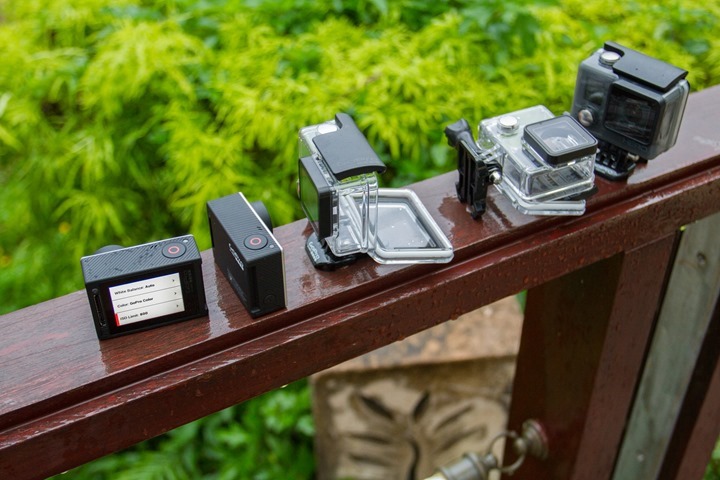
I know many will be trying to compare different models of action cams and looking for some general recommendations. As always, these recommendations will shift with the winds as soon as new models come out. Such is technology, constantly changing. Still, I don’t expect any new action cams between now and CES (first week of January), so – these recommendations will hold for now.
In general, I’d group folks into the following categories:
Best video quality money will buy in an action cam: For those in this category, there’s simply no question it’s the Hero4 Black. Specs alone dictate this, and thankfully the camera backs up the specs from a delivery standpoint. There’s just no other action cameras on the market today doing 4K at full frame rates (Correction: There’s apparently this camera, but it’s pretty wonky being two separate pieces).
Of course, the real question is – does this matter? For most people, probably not. You’d likely be hard pressed on today’s screens to tell the difference between 1080p and 4K, let alone 2.7K and 4K. Still, for the reasons I outlined in the 4K section above, there’s certainly value in such a camera.
An all around action cam: For this, it’s tricky. On one hand the GoPro Hero4 Silver is solid, but at the same time, it’s also a bit overpriced compared to other offerings. They effectively bumped up the price to $399 from what was sub-$300 before. At that price you’re paying double something like the VIRB Elite or Sony Action cams, but of which have more features/functionality (i.e. sensors like GPS, altimeters, etc…). Sure, the Hero4 Silver can do 2.7K video at full frame rates, but for most people, that won’t matter.
A budget action cam: This is where things get really interesting. GoPro dropped the bottom of the price floor with the $129US price point. That’s an incredible price, especially for such a quality cam as the Hero base. At the same time, Garmin more or less countered with VIRB units now at $129US, and flirting every few days with $99US. The VIRB base unit is more functional in every possible spec category than the 2014 Hero base (or equal in those not exceeding).
The only area where the Hero base would be considered better is size, with being a fair bit smaller. If you plan to put it on your head, you might notice the size increase, but if you’re more into bike/car/etc mounting, it won’t matter. As for a few other comparative thoughts to consider…
Mount considerations: There’s no question that GoPro has the most mounting options out there when you include 3rd party mounts. But I wouldn’t let that be the deciding factor. Virtually every other action cam on the market includes a GoPro mounting adapter, so that kinda becomes a wash.
Availability of accessories: When it comes to finding spare parts like a battery pack during a trip, you’ll find no wider availability than GoPro parts though. In every airport on this planet and in just about every terminal of those airports, you’ll find GoPro parts. I was blown away over the past month as I travelled to find that Hero4 parts and cameras were easily accessible in all sorts of random places around the globe, airport or just shopping plaza – mere weeks after launch.
Editing Tools: GoPro’s offering is good (not great, but good), and makes it relatively easy to edit videos. On the flip side, you can edit GoPro footage in most other software video apps – many of them free.
Mobile Apps: When it comes to phone apps, GoPro’s is far and away the best. While most allow you to change settings, not all other companies allow streaming of content or transferring of photos and videos, all quickly and easily. This can be a major benefit when you’re trying to get content somewhere quickly and share it. Further, the quick turning on/off of WiFi via a solid button press on the Silver/Black is awesome. It’s just quick and painless.
Hero4 Silver Touchscreen: This is cool, no doubt, but at the same time, for my particular use cases it’s less important. Usually if I’m mounting a camera to a bike or to my helmet, I can easily check framing via the GoPro mobile app display. And the same goes for playback via the phone app. On the flip side, my wife loved the screen and much preferred having that unit over the other GoPro’s, purely because of the screen.
Battery: While the Hero4 Silver and base have good and competitive battery life, the Hero4 Black’s battery life is just downright bad. Only an hour? It’s somewhat ironic as the target audience for that model is likely to shoot more video than the lower models. Still, you can relatively easily solve that with extra spare batteries.
Ultimately I’d say the decision to go Black will simply pivot on whether you care about 4K video or not. Ultimately, you’ll have to balance the pros and cons of each of the components, along with price, and figure out what unit works best for you and the set of circumstances you’ll use it for.
Summary:
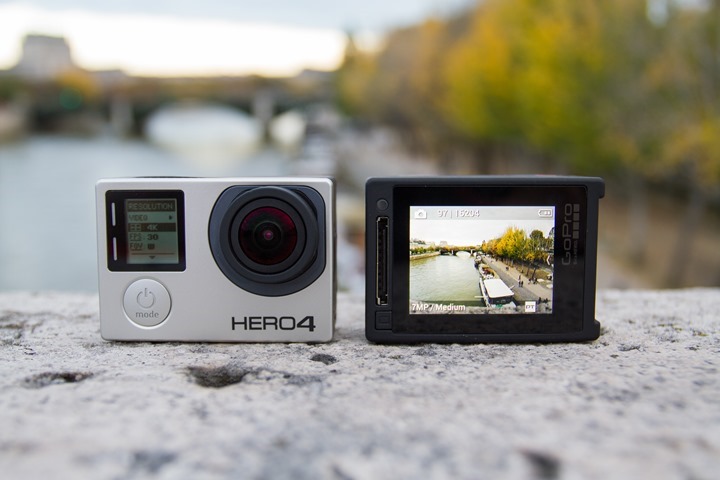
Like previous years, GoPro has continued to raise the bar on action cameras from a specification standpoint – in particular, within the resolution and video/photo quality department. That aspect alone will no doubt make it a must have for those wanting the best video quality money can buy in an action cam.
Meanwhile at the budget end of the spectrum, they’ve forced other companies to slash prices to compete with the new $129US GoPro Hero. While this unit isn’t as full featured as other competitive products that are now priced the same or less, it is a rock solid option.
The next year will no doubt be interesting to watch for GoPro, especially going into CES with what will undoubtedly unleash a slew of new action cameras into the market. With GoPro pushing prices up $100 on their two top units, I’m not fully convinced that the bulk of consumers will follow to the higher end.
I think their base model is brilliant, but selling the Silver model at $400 will be a hard push to the mid-market. Meanwhile, at least until new competitors get out there, the Black model will likely hold (and rightfully so) the top spot for the upcoming winter.
Found this review useful? Or just want to save 10%? Here’s how:

Hopefully you found this review useful. At the end of the day, I’m an athlete just like you looking for the most detail possible on a new purchase – so my review is written from the standpoint of how I used the device. The reviews generally take a lot of hours to put together, so it’s a fair bit of work (and labor of love). As you probably noticed by looking below, I also take time to answer all the questions posted in the comments – and there’s quite a bit of detail in there as well.
I’ve partnered with Clever Training to offer all DC Rainmaker readers exclusive benefits on all products purchased. You can read more about the benefits of this partnership here. You can pickup the GoPro units through Clever Training using the links below. By doing so, you not only support the site (and all the work I do here) – but you also get to enjoy the significant partnership benefits that are just for DC Rainmaker readers. And, since this item is more than $75, you get free US shipping as well.
GoPro Hero4 Black
GoPro Hero4 Silver
GoPro Hero Base (Amazon only, no savings)
Additionally, you can also use Amazon to purchase the GoPro units or accessories (though, no discount). Or, anything else you pickup on Amazon helps support the site as well (socks, laundry detergent, cowbells). If you’re outside the US, I’ve got links to all of the major individual country Amazon stores on the sidebar towards the top.
Thanks for reading! And as always, feel free to post comments or questions in the comments section below, I’ll be happy to try and answer them as quickly as possible.











